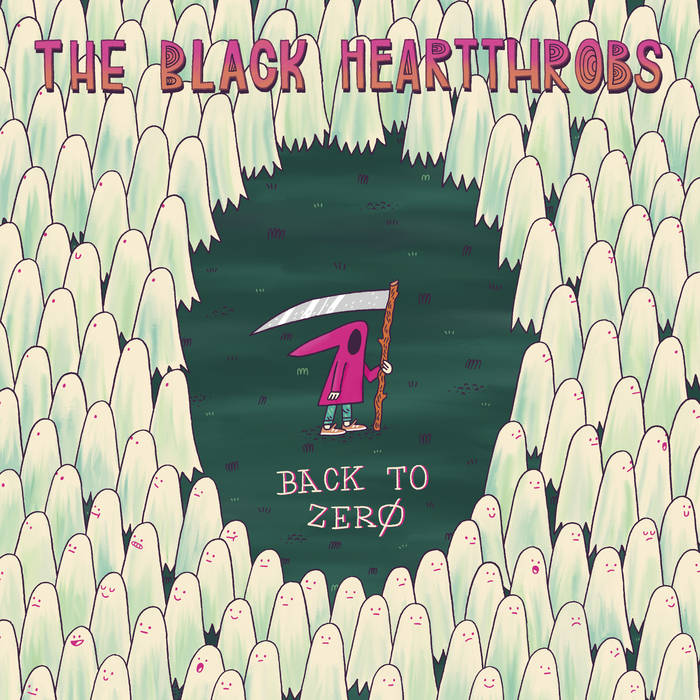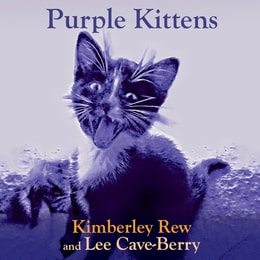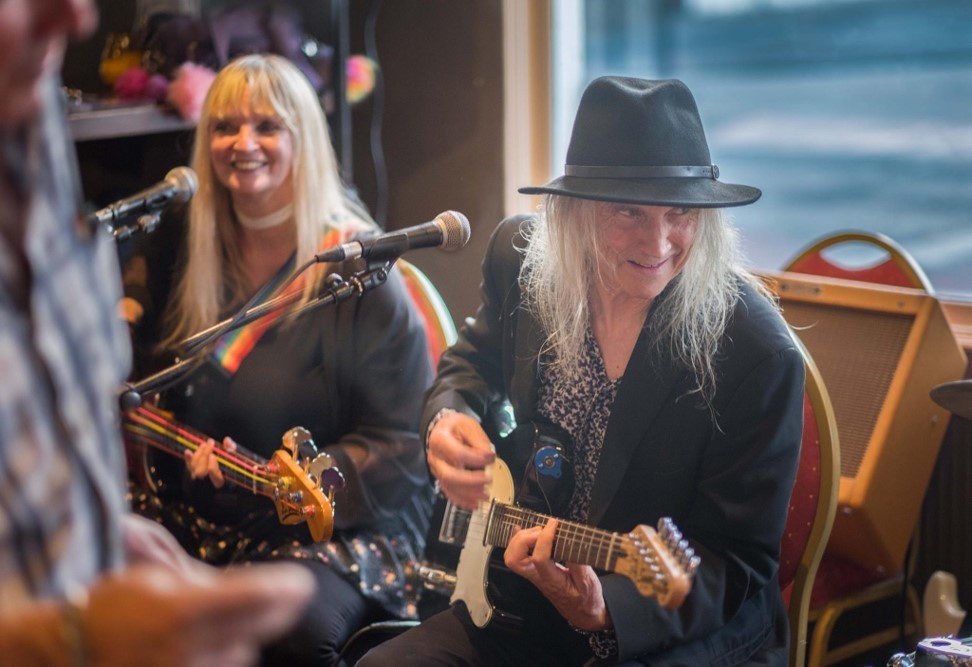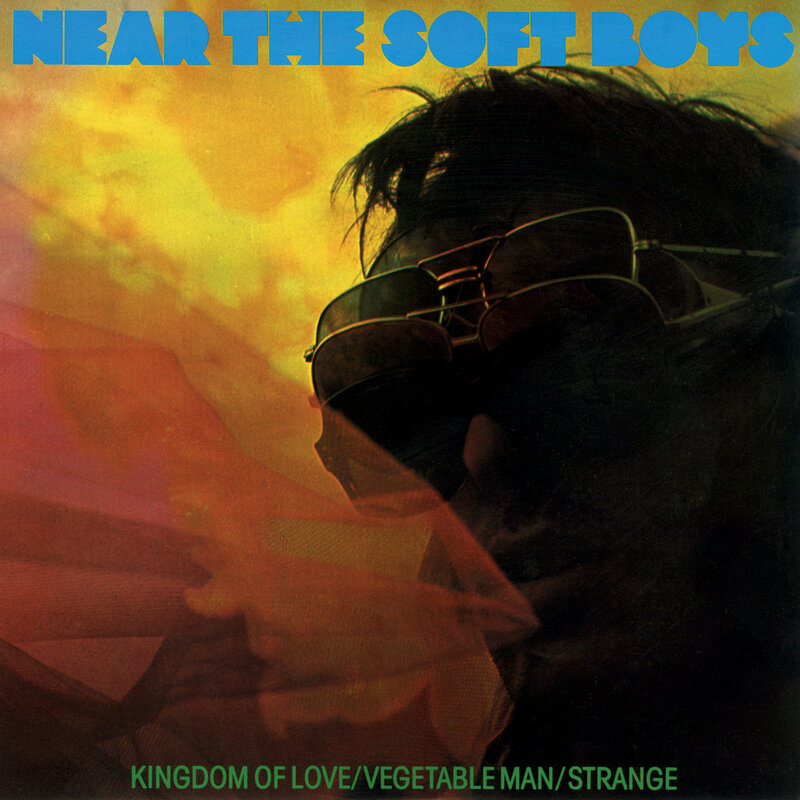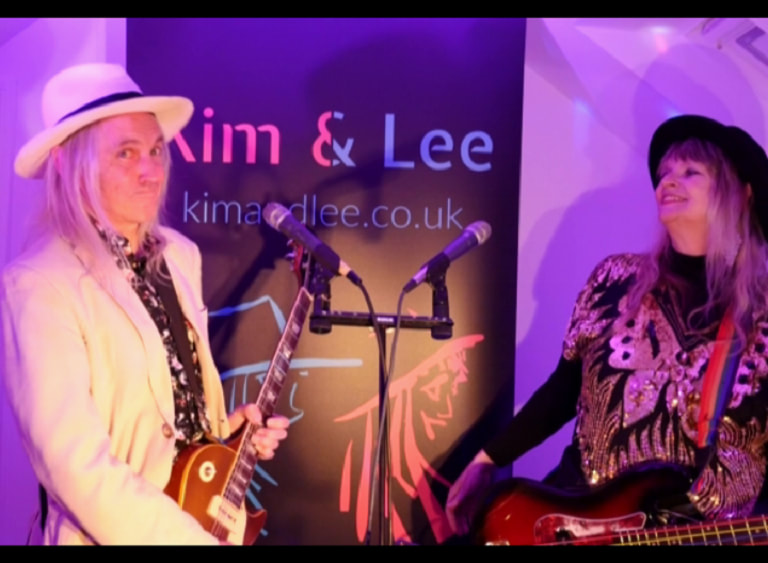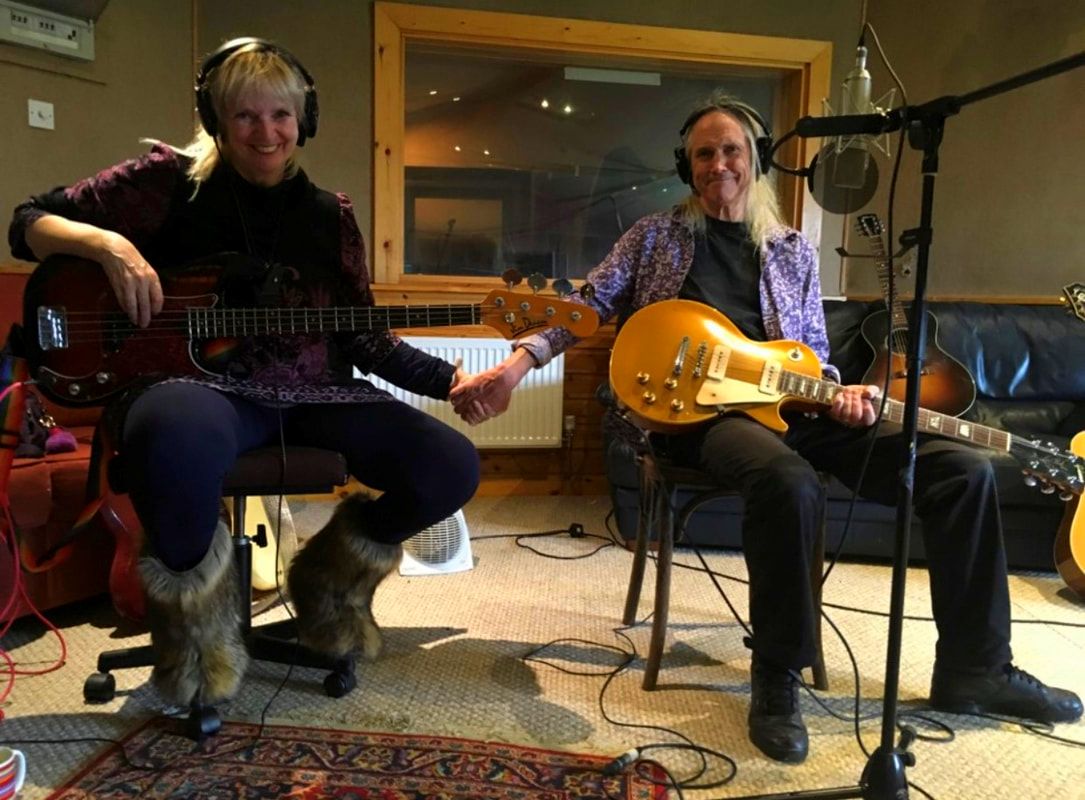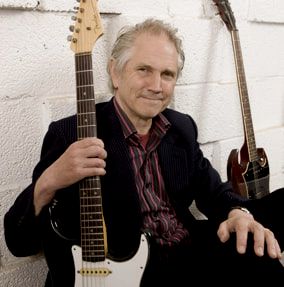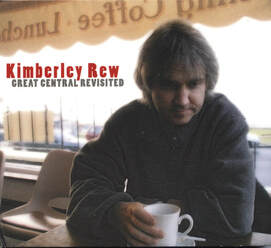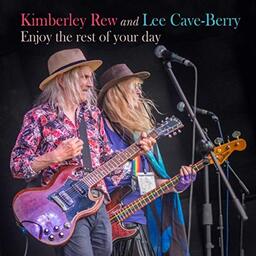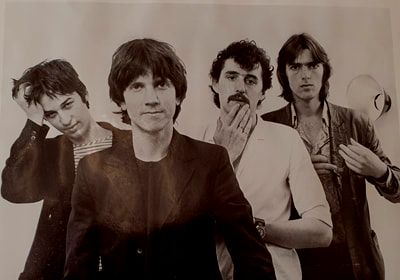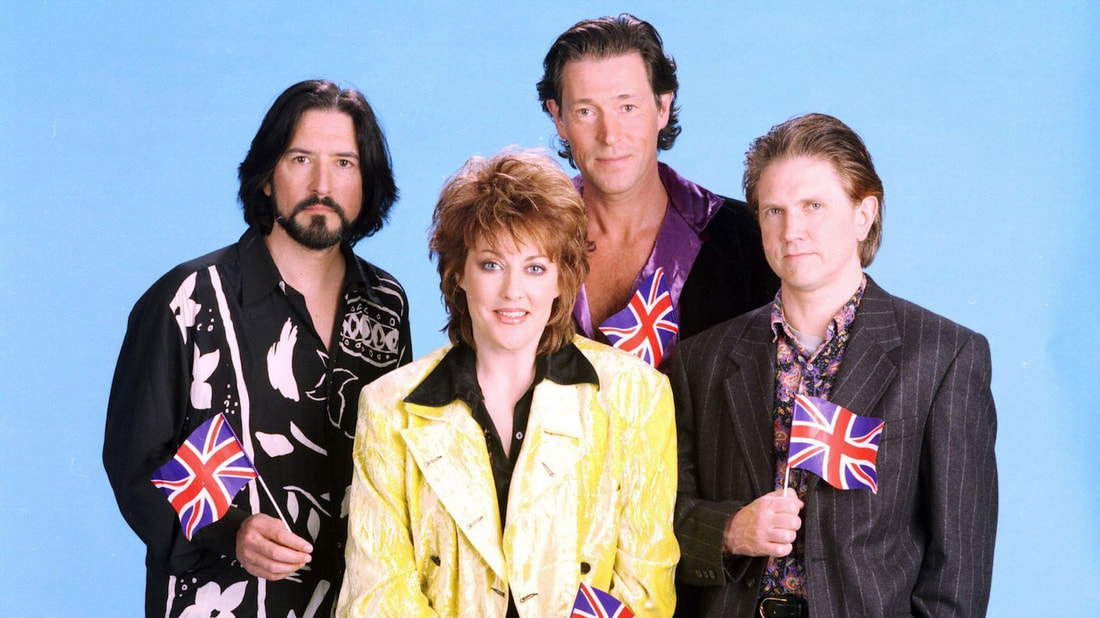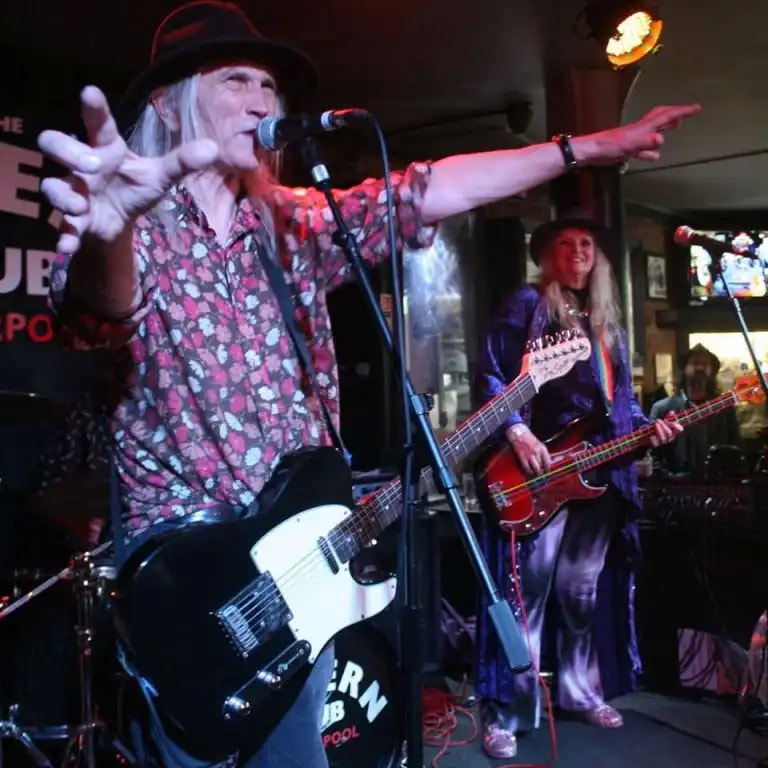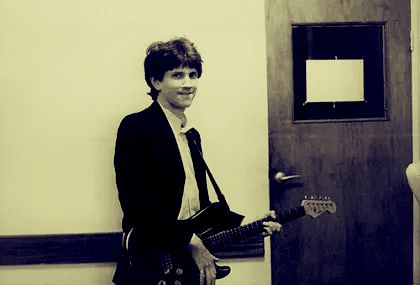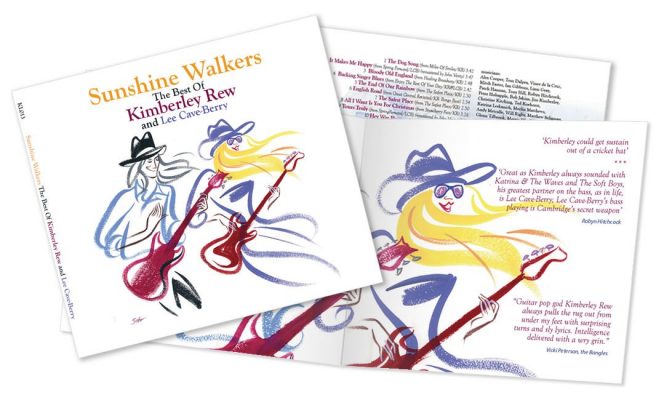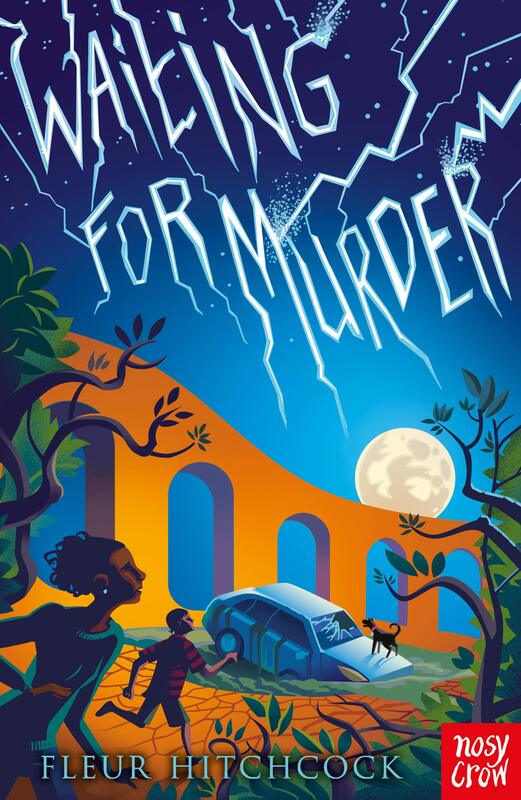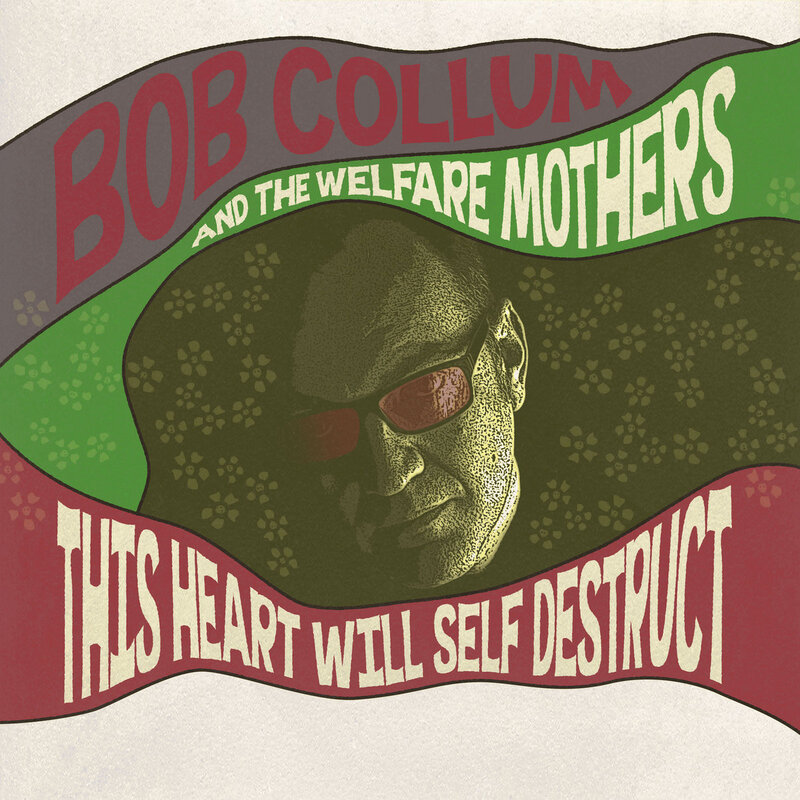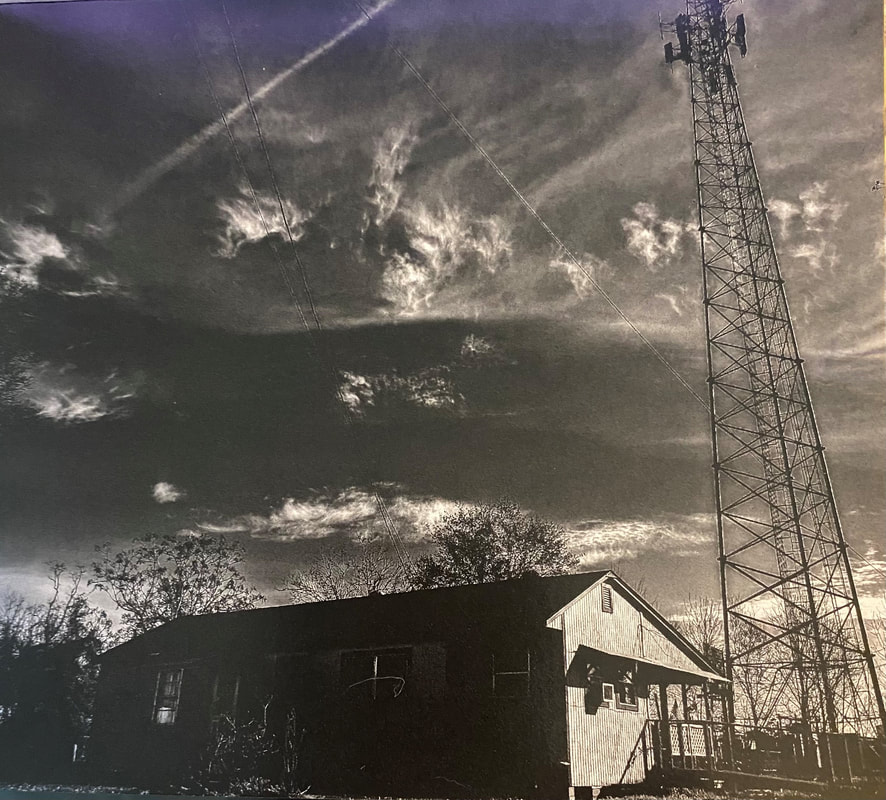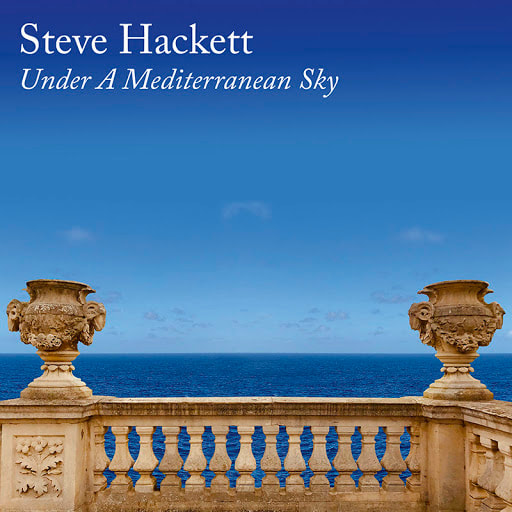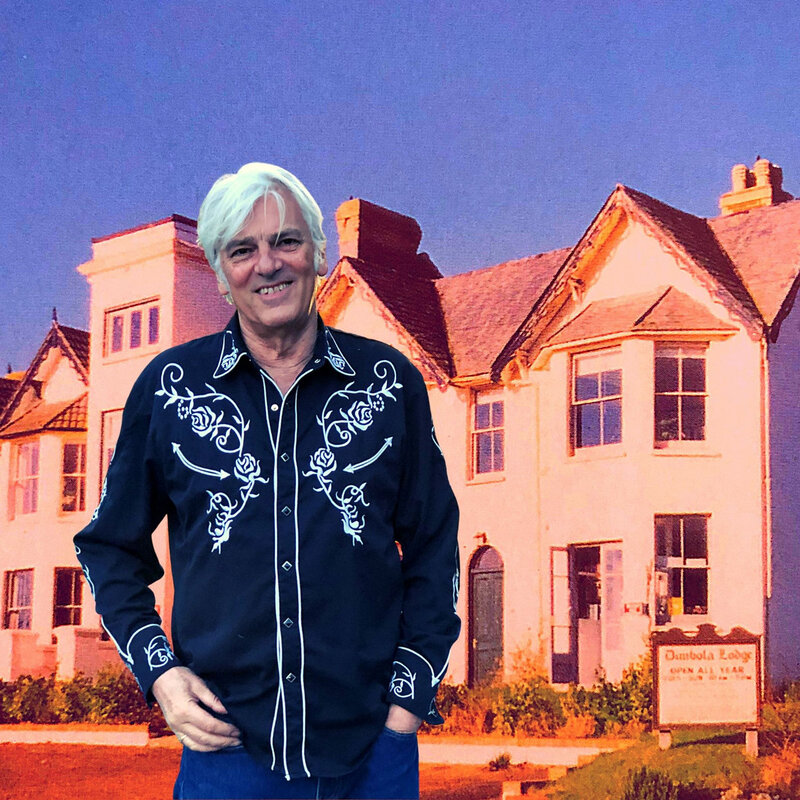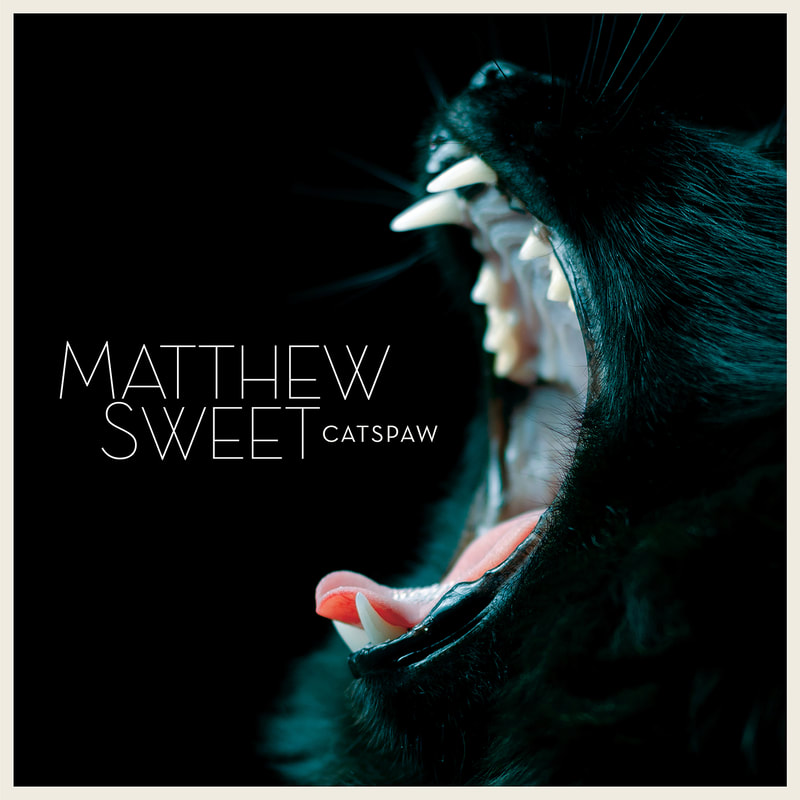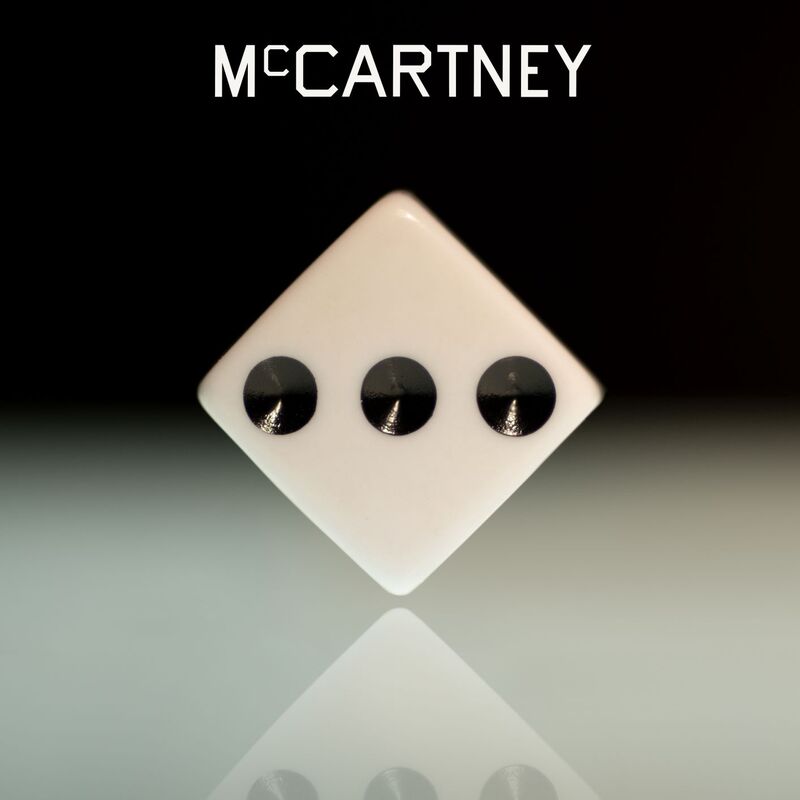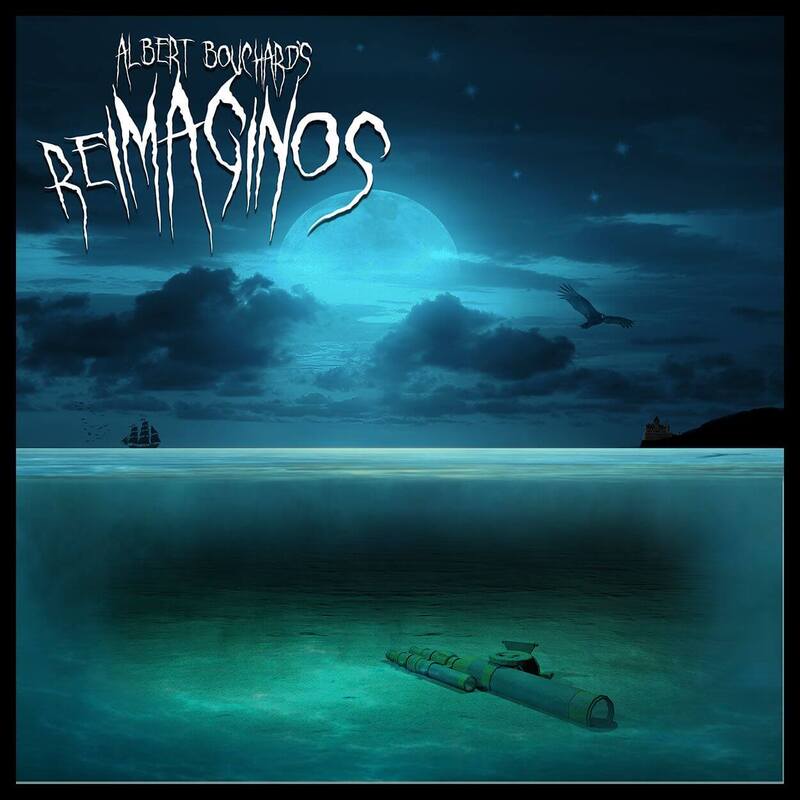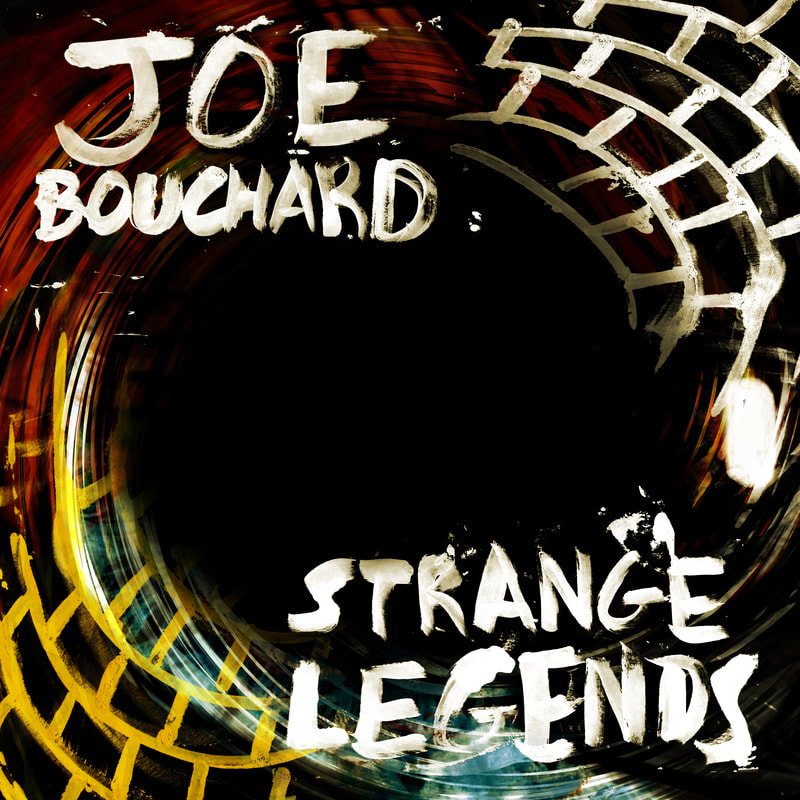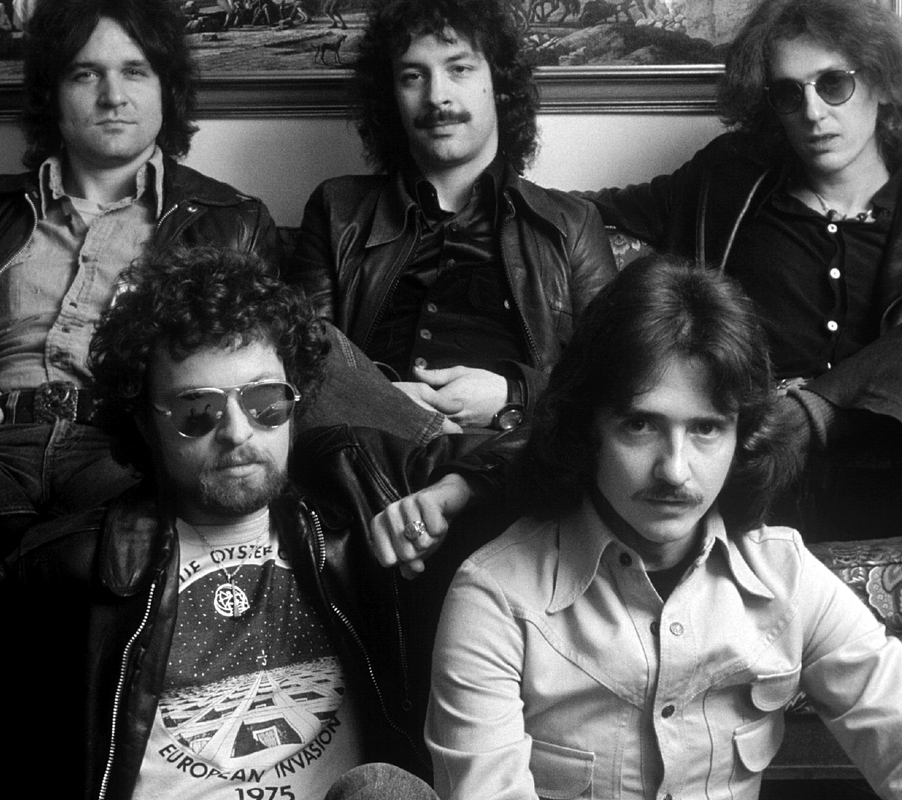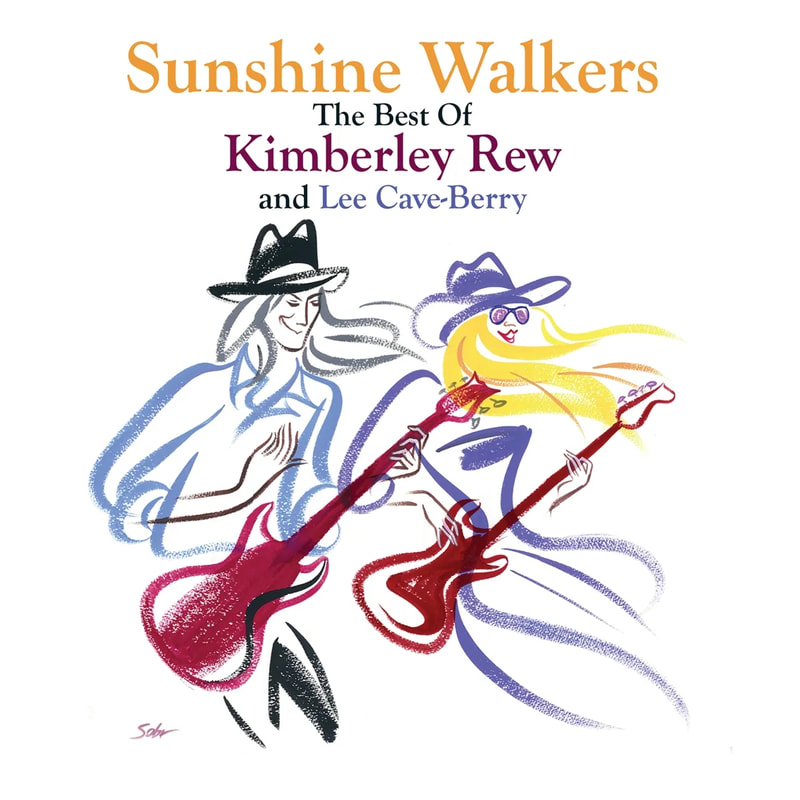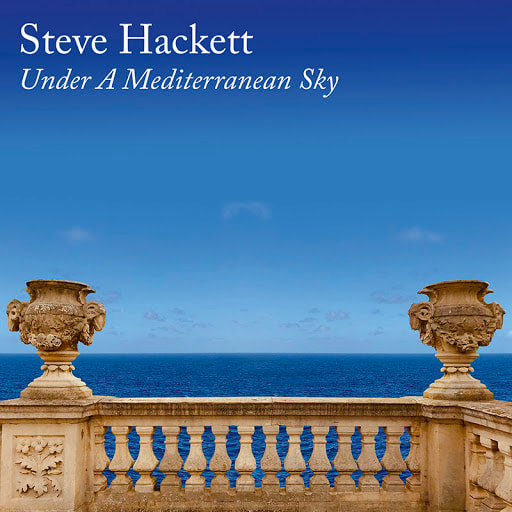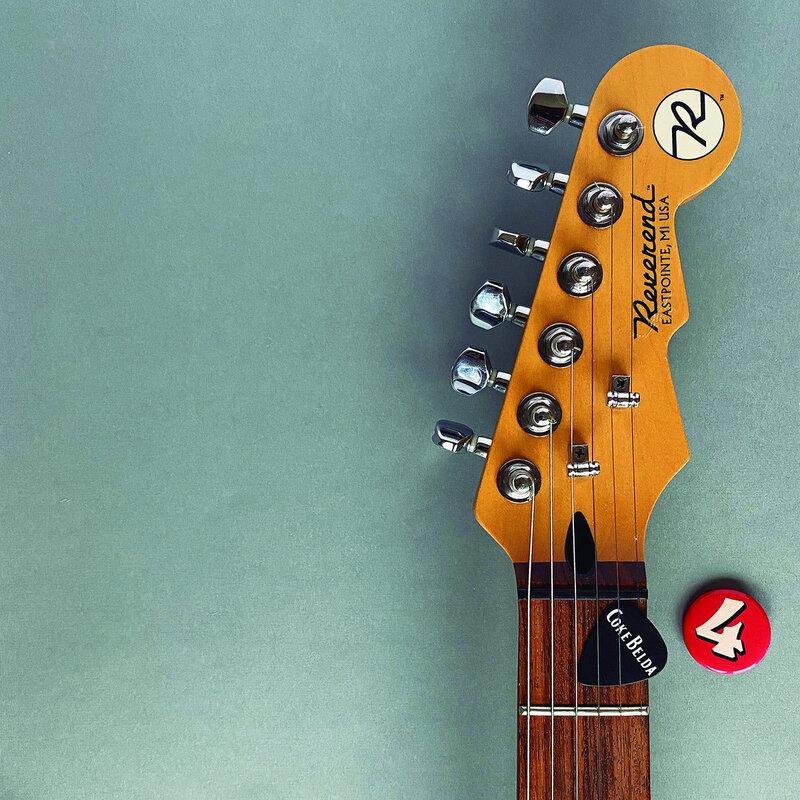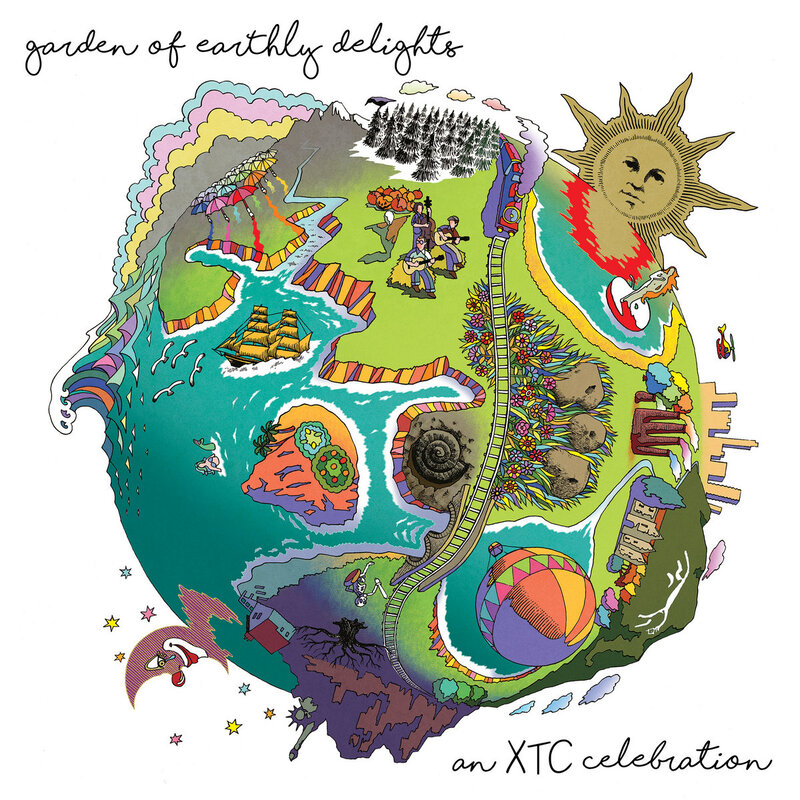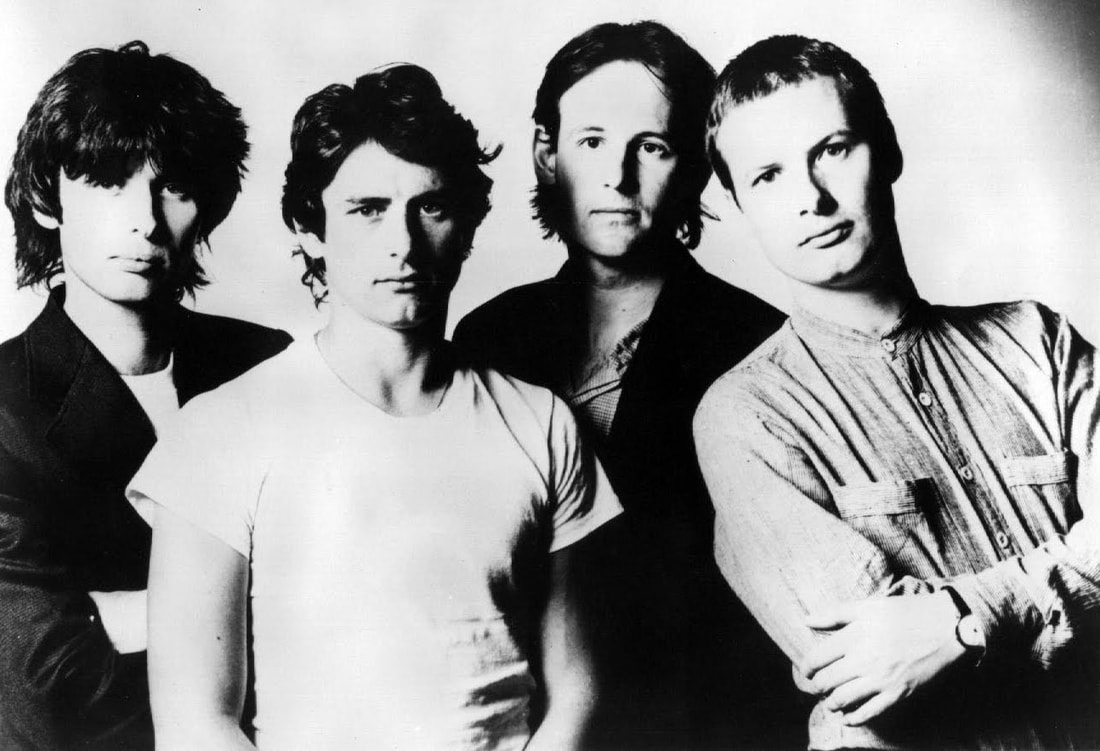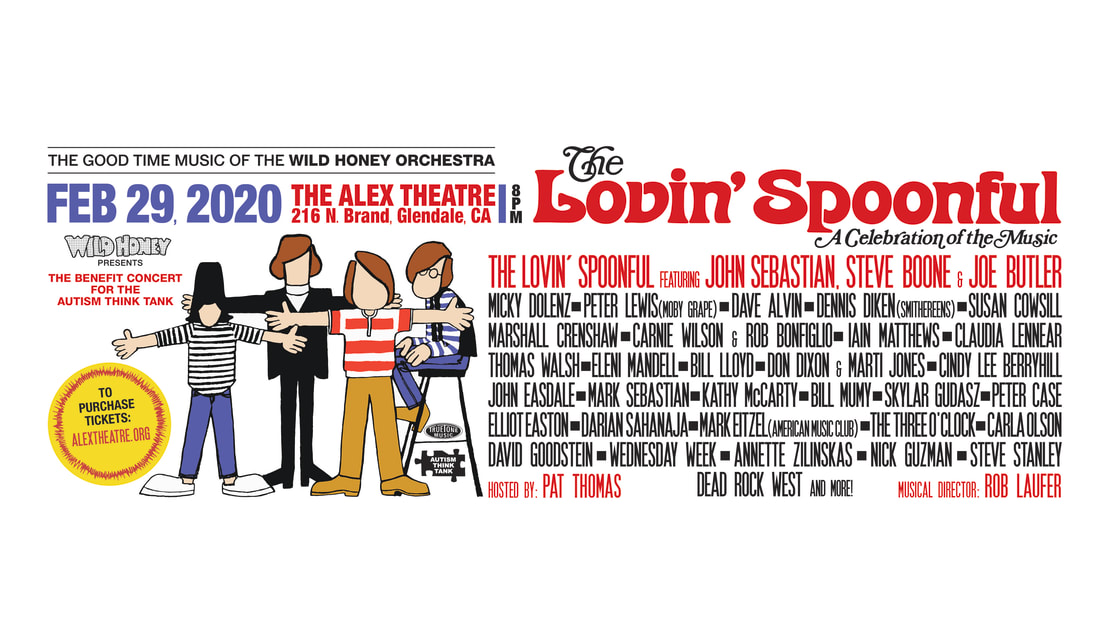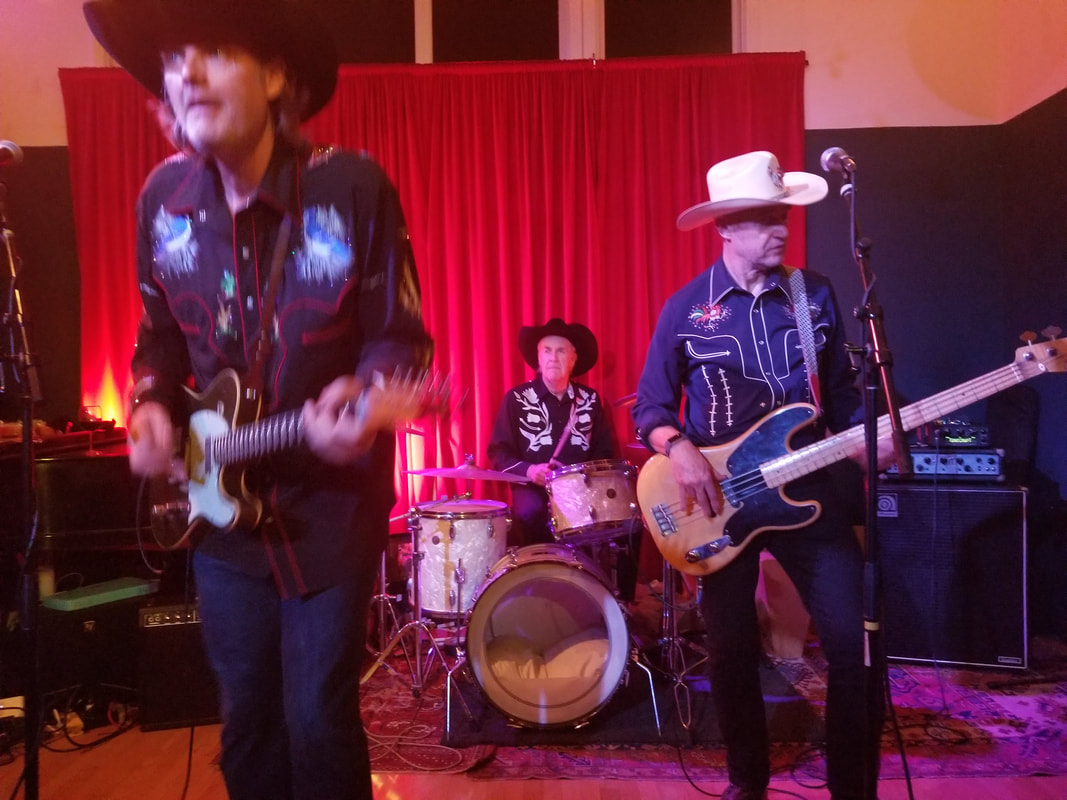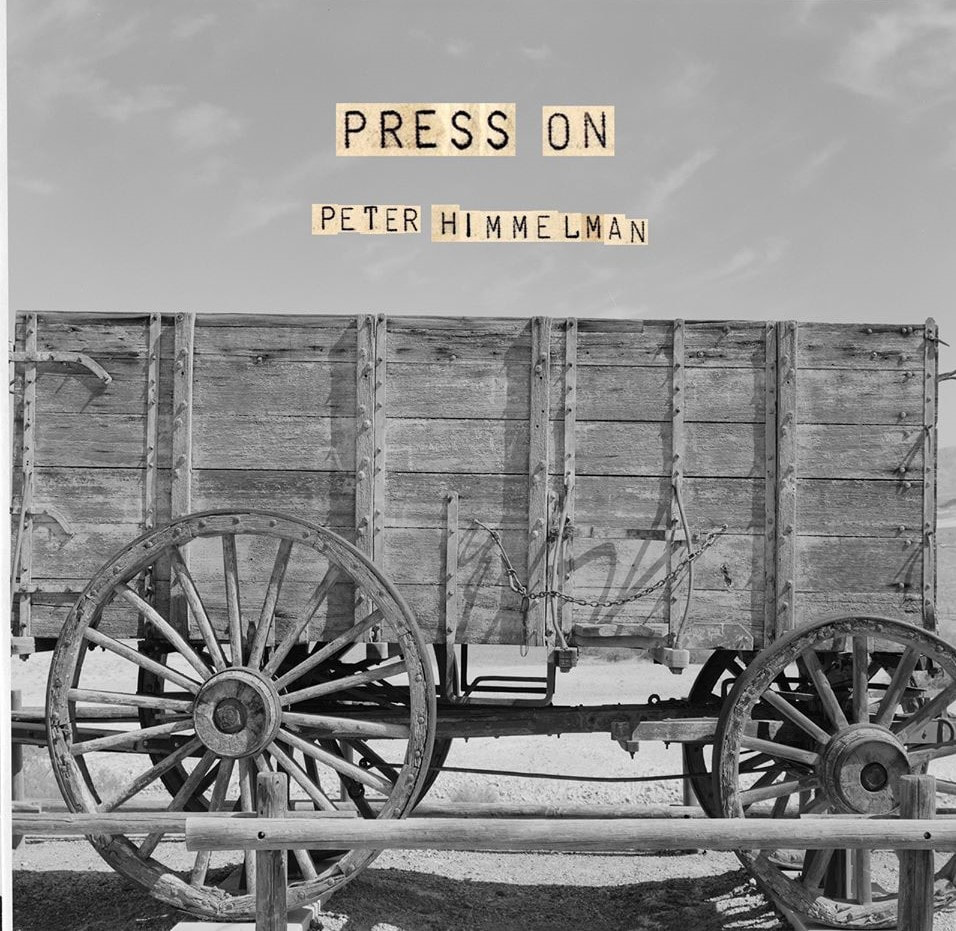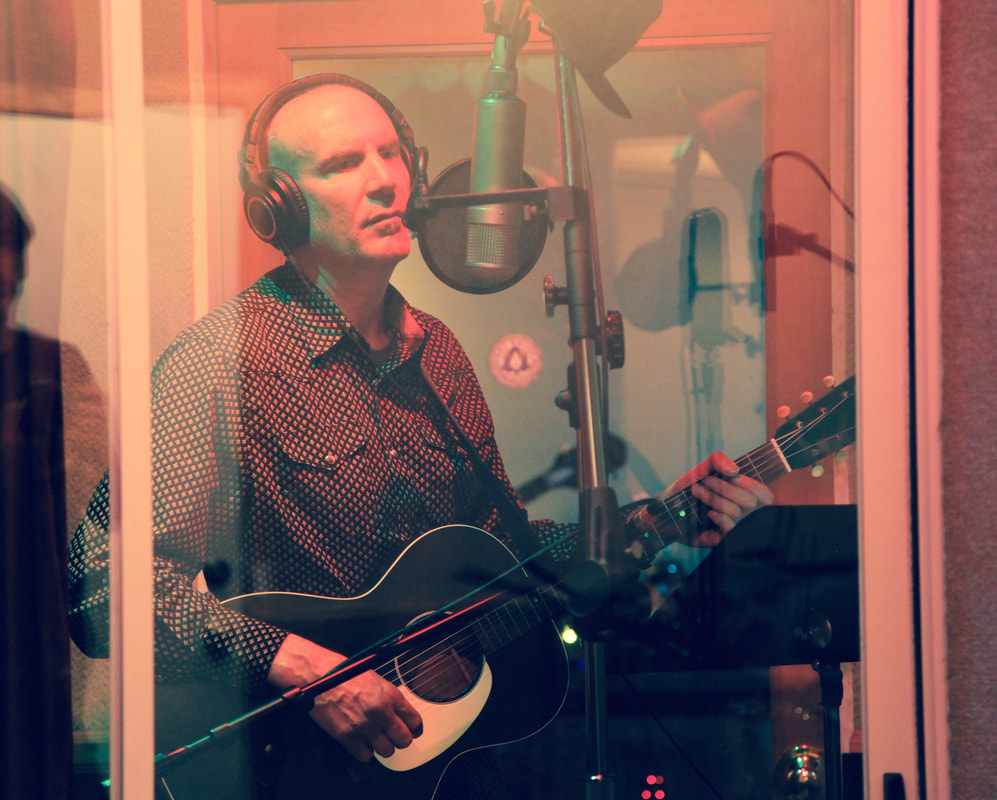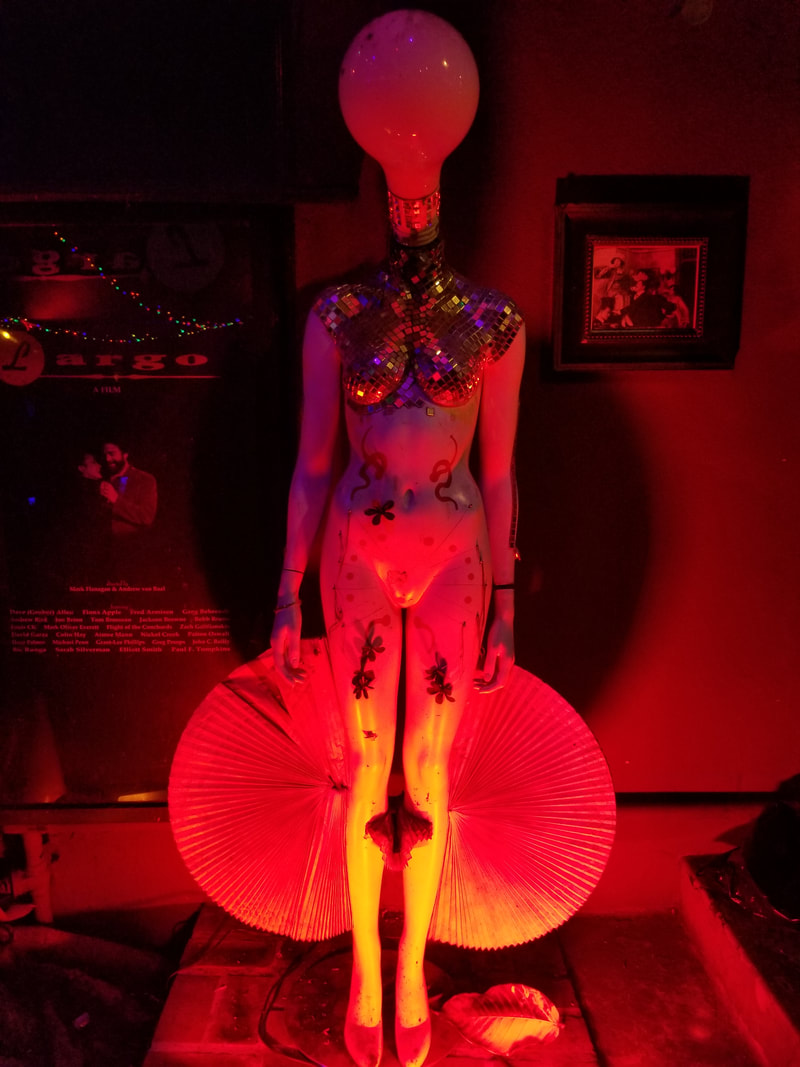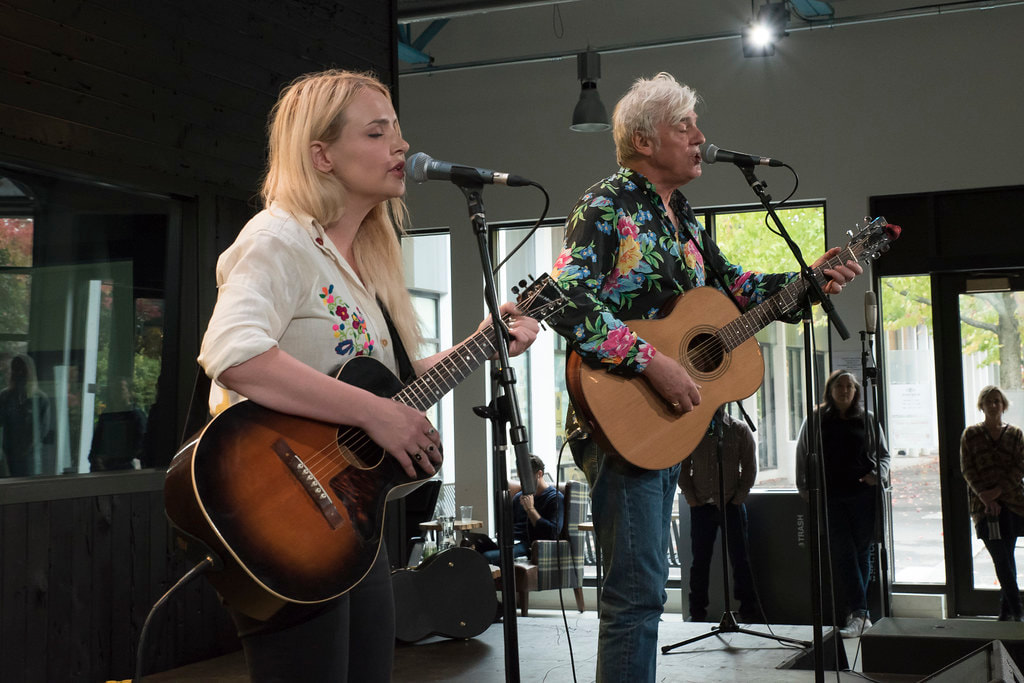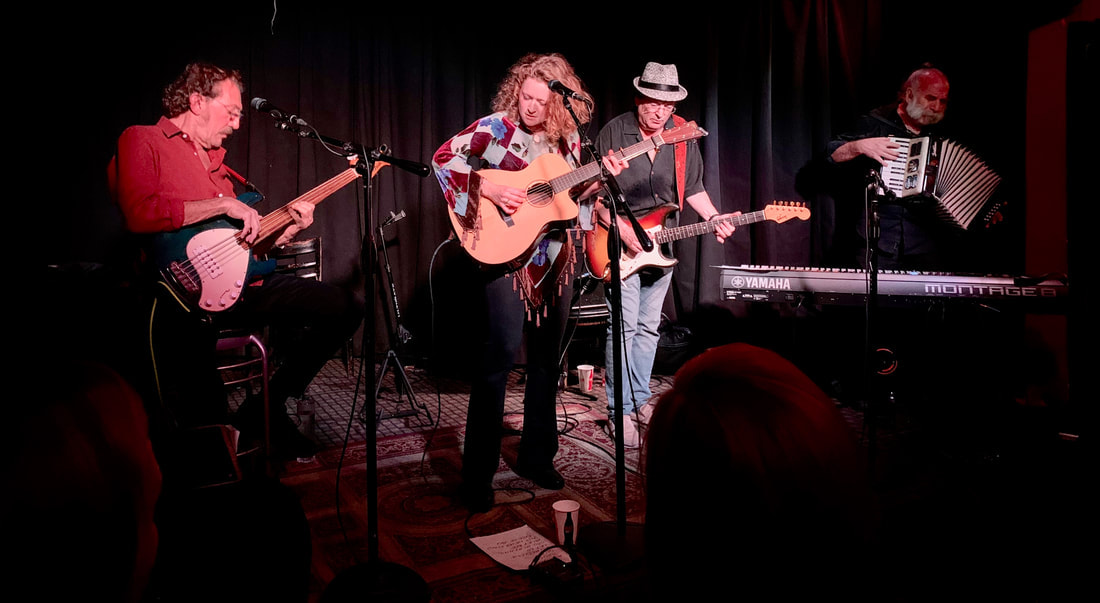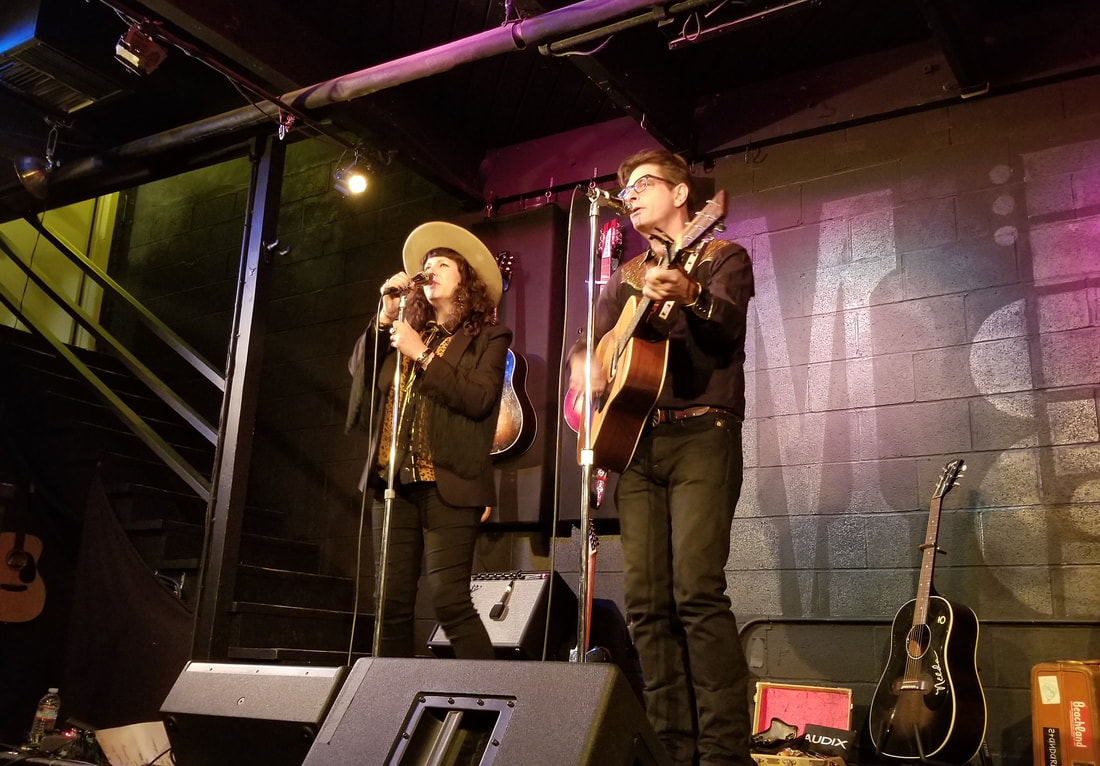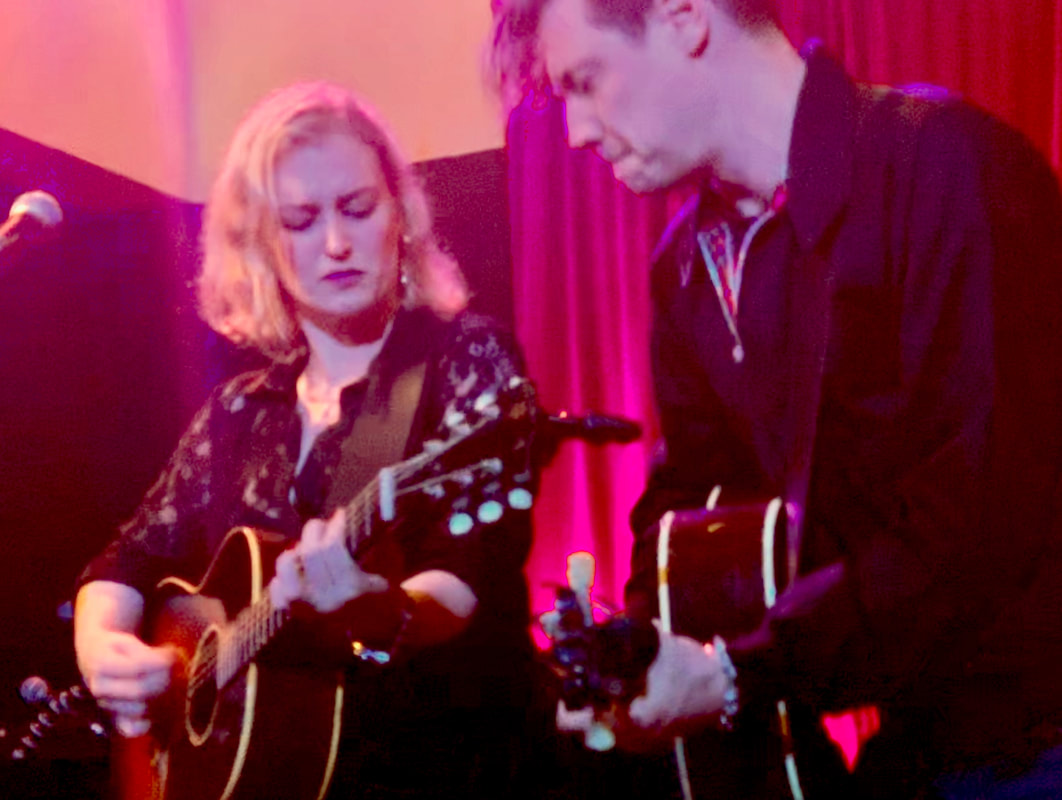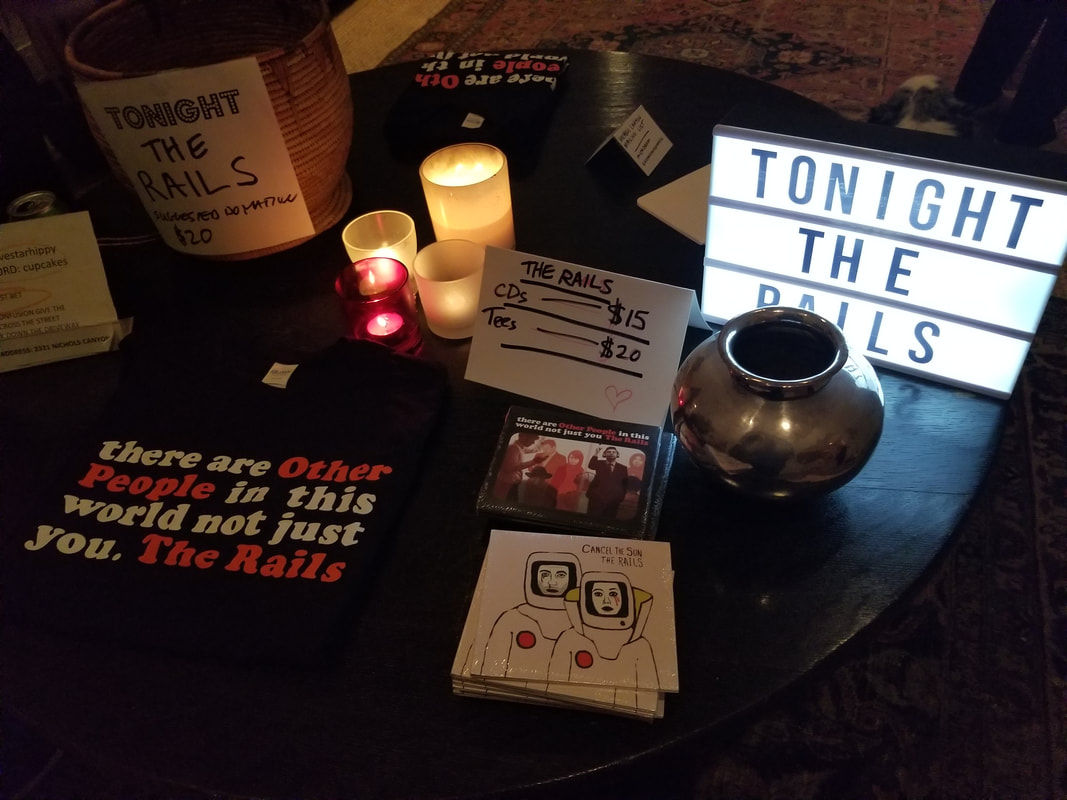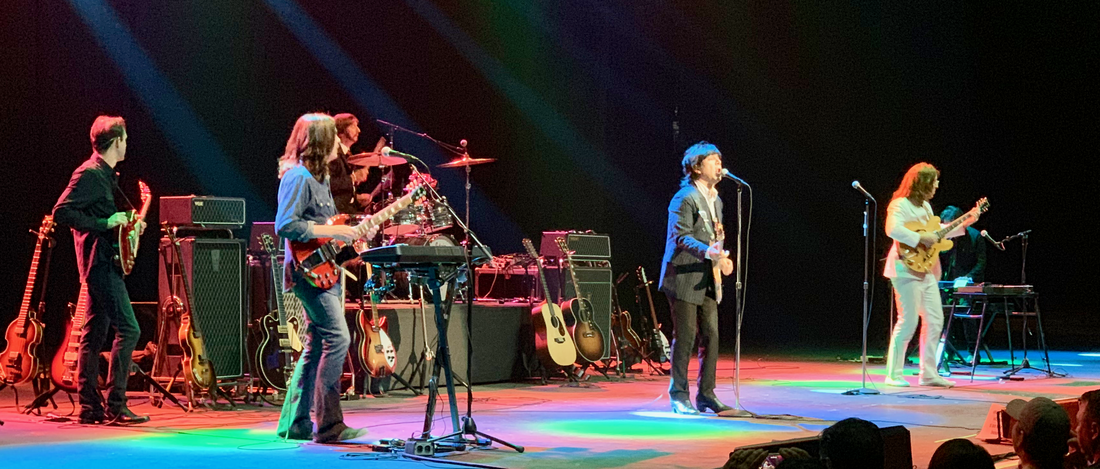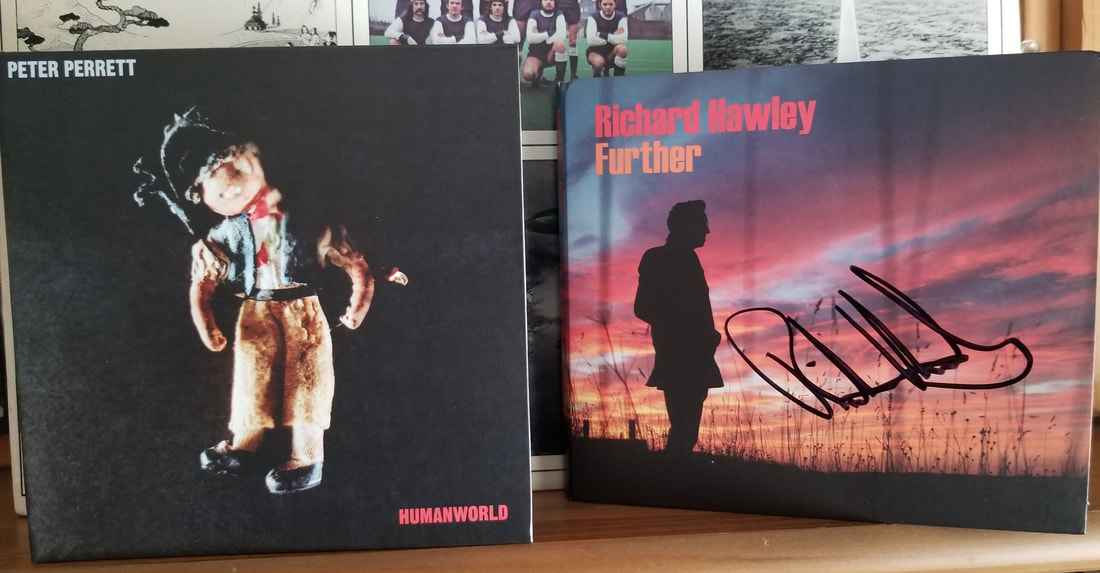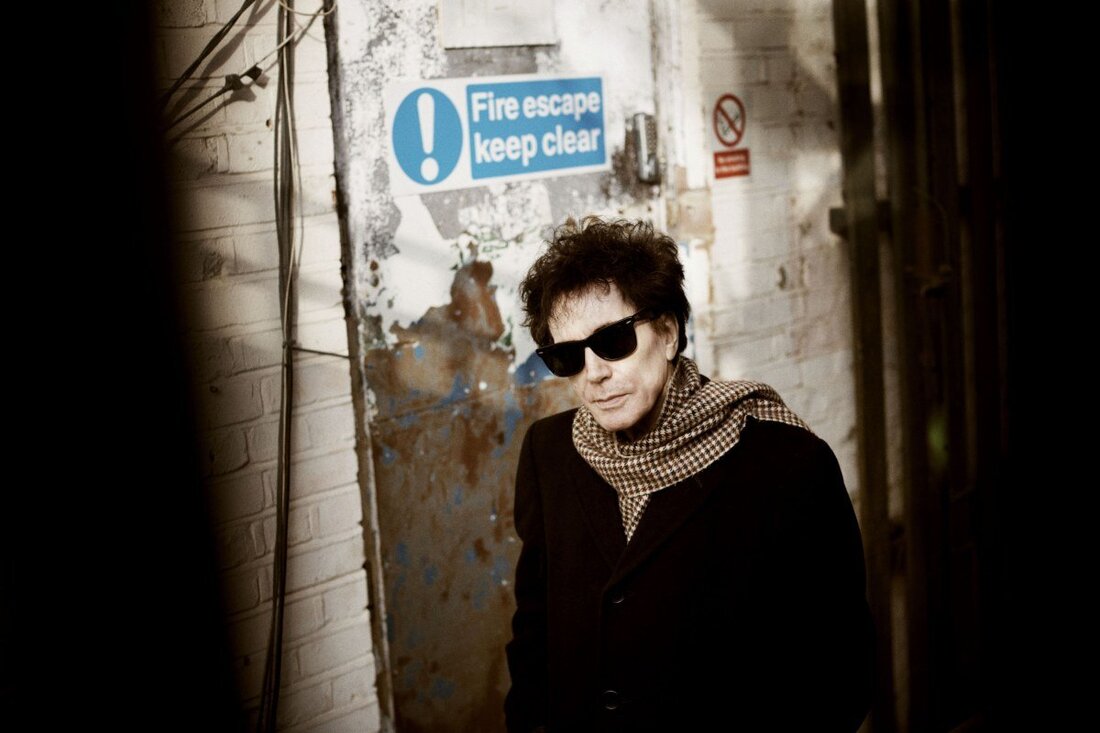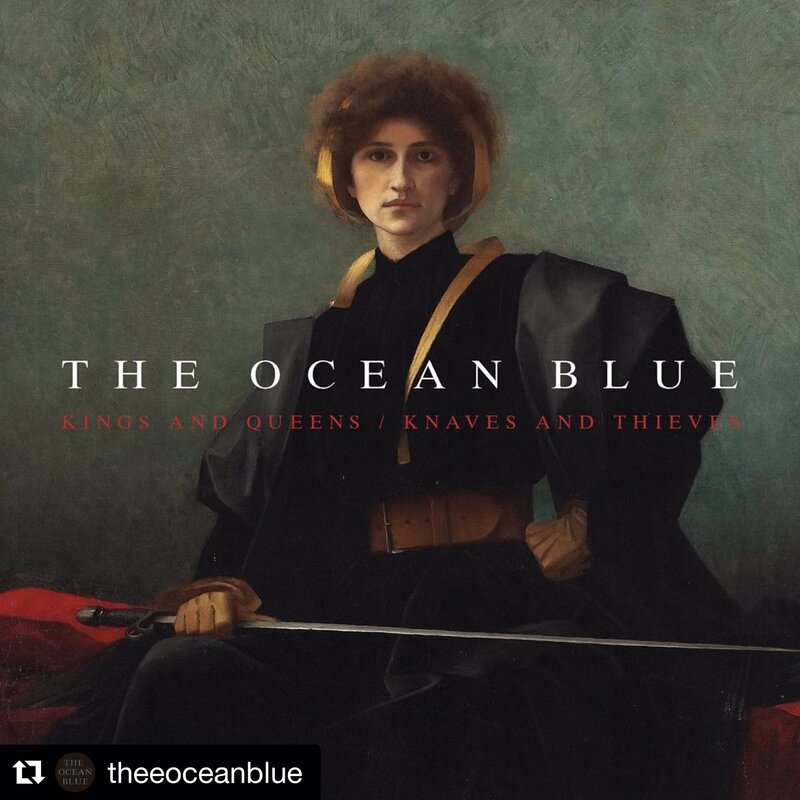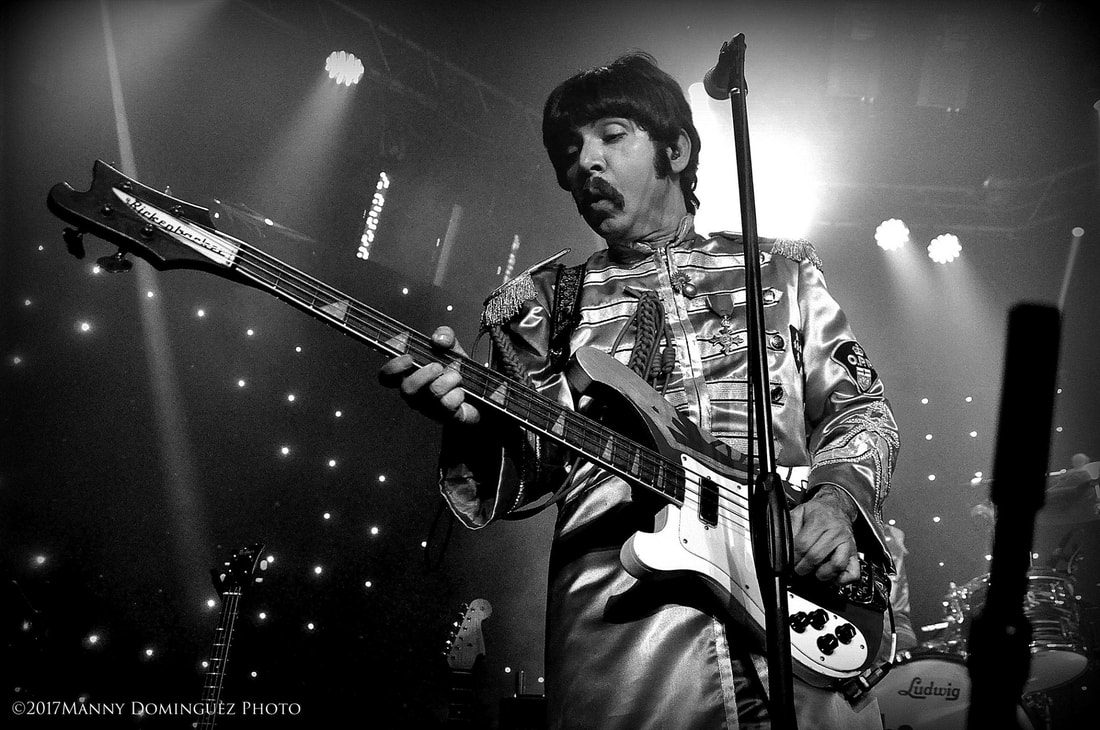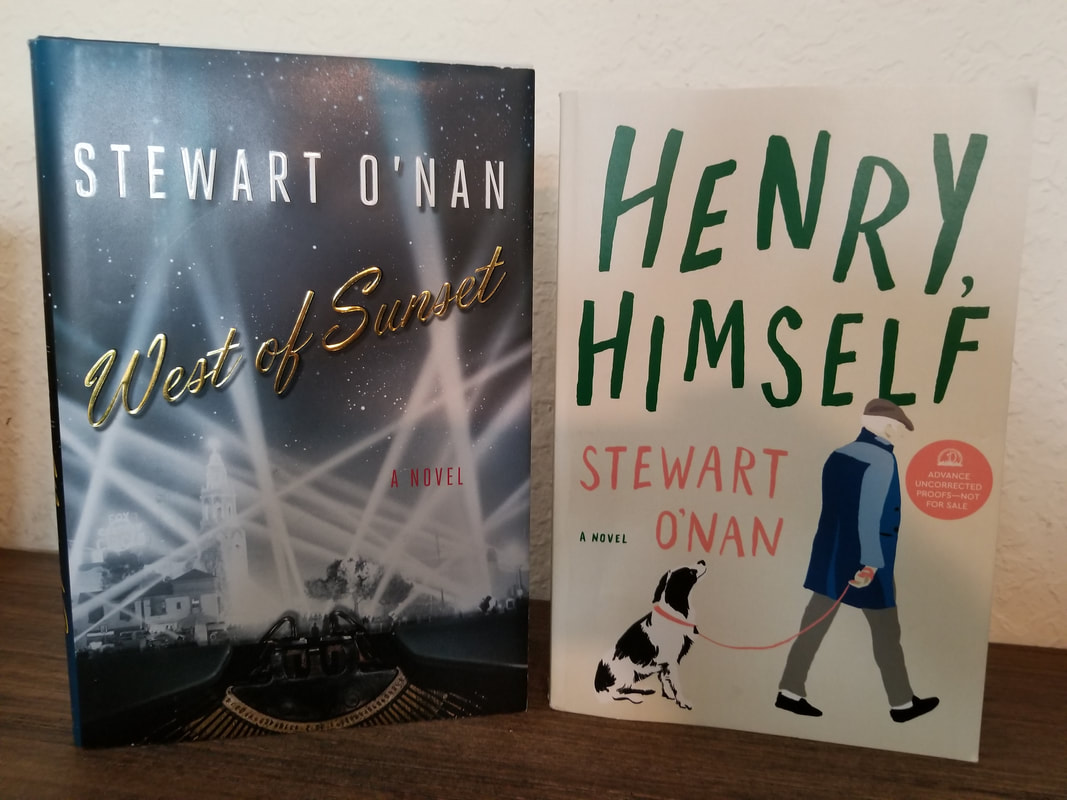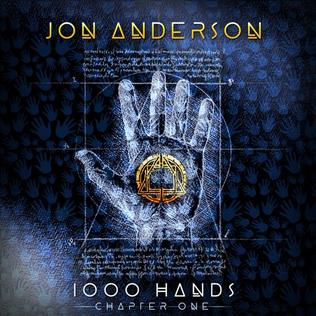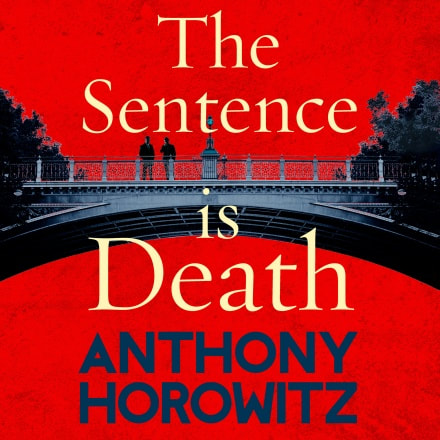Howdy Doody! Tamar Berk Releases New Video FromHer Critically Acclaimed Album Start At The End
Check Out "Alone Tonight Here!
The Knock and Knowall New Album Roundup for June!
Just Who The *&^% Is Tamar Berk?!
We talk to the astonishingly talented independent artist and delve into her mysterious past!
Interview and overview by Eric Sandberg with Mike Berman
For lovers of popular music, Tamar Berk seems to have suddenly materialized out of the ether as a fully formed, brilliant, pop/rock songsmith, performer, arranger and producer. Her 'debut' solo album The Restless Dreams Of Youth was recorded and self-released in '20/'21, during the height of Covid and is an instant classic, garnering critical praise from her hometown of San Diego and all across the country. It was nominated for two San Diego Music Awards.
"I didn't even submit it," Berk tells us from her home in San Diego. "I didn't know about the awards, actually. A guy named Bart Mendoza called me. He's sort of a legend in San Diego. He's a guy that hears about things going on around town and he has a show called Music Scene SD and he compiles all sorts of tidbits for various local publications.
Someone had told him about my album and he called me up and had me on the show where I performed two songs. ("Shadow Clues" & "A New Case") It was Bart who said the album was worthy of consideration for the SDMAs and he submitted it to them. I didn't hear anything for a long time but one day I got an email from the committee that I had been nominated and I was also invited to perform at the awards ceremony. It was great!" I didn't win, which was kind of sad, but I wasn't expecting anything and I got to play on that huge stage, it was beautiful and I'm very thankful."
The album was released to all major streaming platforms and pressed on limited edition vinyl which sold out, prompting Berk recently to press another batch of vinyl as well as a run of CDs [ask your grandfather]. Read more
"I didn't even submit it," Berk tells us from her home in San Diego. "I didn't know about the awards, actually. A guy named Bart Mendoza called me. He's sort of a legend in San Diego. He's a guy that hears about things going on around town and he has a show called Music Scene SD and he compiles all sorts of tidbits for various local publications.
Someone had told him about my album and he called me up and had me on the show where I performed two songs. ("Shadow Clues" & "A New Case") It was Bart who said the album was worthy of consideration for the SDMAs and he submitted it to them. I didn't hear anything for a long time but one day I got an email from the committee that I had been nominated and I was also invited to perform at the awards ceremony. It was great!" I didn't win, which was kind of sad, but I wasn't expecting anything and I got to play on that huge stage, it was beautiful and I'm very thankful."
The album was released to all major streaming platforms and pressed on limited edition vinyl which sold out, prompting Berk recently to press another batch of vinyl as well as a run of CDs [ask your grandfather]. Read more
The Latest! The Joy Of Discovery: Tamar Berk Restores Our Faith In Music
Album review by Eric Sandberg
In today's world, discovering new music that grabs hold of me like the first time I heard "Whole Lotta Love," "Are Friend's Electric" or (later on) "Talk About The Passion," is mainly a matter of happenstance. The radio is no help. The vaunted "Morning Becomes Eclectic" radio show on KCRW here in Los Angeles makes one slog through hours of acid beats before playing something of real interest.
Last year, I bought an album by an artist named Dolph Chaney, purely based on the cool retro album cover design. Dolph doesn't look like your average rock star, he looks like a cuddly teddy bear. As it turns out, the album made our top ten for 2021 with it's infectious, positive, power pop.
Last year, I bought an album by an artist named Dolph Chaney, purely based on the cool retro album cover design. Dolph doesn't look like your average rock star, he looks like a cuddly teddy bear. As it turns out, the album made our top ten for 2021 with it's infectious, positive, power pop.
I followed Dolph on Facebook to keep up with his doings and one day he posted a video where he was exuberantly extolling the virtues of a San Diego based artist named Tamar Berk. In the video he performed a ferocious cover of her song "Heavy And Abusive" from her debut solo album The Restless Dreams Of Youth, released last year. I was intrigued so I searched the album out on Apple Music.
I'm going to roll out a cliche' here but the album absolutely blew me away. Berk's sheer songwriting confidence, coupled with her innate arranging skills and use of harmonies would be worthy of a major label push in a better, vanished, time. I don't really want to compare her to other artists because she has obviously consumed a cornucopia of influences and synthesized them into something truly her own. She mixes Indie Rock, Power Pop, Laurel Canyon style wistfulness and the kitchen sink into her oeuvre.
Read more
What's Goin' Ahn: 1/6 of 2022 Is In The Books
Reviews by Eric Sandberg
In the normal course of events the music marketplace is flooded with new releases
around November and December while the first quarter of the subsequent year sees only a tiny slate of releases by lesser artists. Sniffly old Uncle Covid, however refuses to pass on and keeps tossing his three toed cane into the machinery at the pressing plants causing a delightful spillover of notable releases early in the new year. Let's take a look at just a few. Read more
around November and December while the first quarter of the subsequent year sees only a tiny slate of releases by lesser artists. Sniffly old Uncle Covid, however refuses to pass on and keeps tossing his three toed cane into the machinery at the pressing plants causing a delightful spillover of notable releases early in the new year. Let's take a look at just a few. Read more
The Latest! Our Top Ten(ish) Albums Of 2021: Click here !!
We Talk To Kimberley Rew (Soft Boys, Katrina & The Waves) And Lee Cave-Berry About Their Smashing New Album Purple Kittens, Song By Song!
David Bowie ISO/Parlophone
Toy (Box Set) *****
Toy was intended as a record and quick release project for Bowie, something like what Elvis Costello did years later with Momofuku. It found him in a reflective mood, reworking songs from the earliest parts of his career, when he was David Jones, along with a couple of new tunes. These reworked versions reveal how skilled a songwriter Bowie was, even in his early teens. Not quite as sophisticated as say "Life On Mars," but worthy of their time.
Alas, by the end of the 90s Bowie was no longer the monstrous unit shifter of yore and his cash strapped record label balked at releasing the album. The glorious new song "Shadow Man" ended up on 2002's Heathen (The Rays) while the title track appeared on the late career 3-disc compilation Nothing Has Changed.
This release contains three discs, the original album as intended, a disc of outtakes including a version of "Liza Jane," not on the album, while the third contains stripped down acoustic performances of the songs. Though a person on my budget might have preferred a single disc release, I am grateful that they released a standalone version from the hopelessly expensive [for me] decade box set, something they did not do for the intriguing rerecording of Bowie's late 80's let down album, ironically title Never Let Me Down. Read more
Toy (Box Set) *****
Toy was intended as a record and quick release project for Bowie, something like what Elvis Costello did years later with Momofuku. It found him in a reflective mood, reworking songs from the earliest parts of his career, when he was David Jones, along with a couple of new tunes. These reworked versions reveal how skilled a songwriter Bowie was, even in his early teens. Not quite as sophisticated as say "Life On Mars," but worthy of their time.
Alas, by the end of the 90s Bowie was no longer the monstrous unit shifter of yore and his cash strapped record label balked at releasing the album. The glorious new song "Shadow Man" ended up on 2002's Heathen (The Rays) while the title track appeared on the late career 3-disc compilation Nothing Has Changed.
This release contains three discs, the original album as intended, a disc of outtakes including a version of "Liza Jane," not on the album, while the third contains stripped down acoustic performances of the songs. Though a person on my budget might have preferred a single disc release, I am grateful that they released a standalone version from the hopelessly expensive [for me] decade box set, something they did not do for the intriguing rerecording of Bowie's late 80's let down album, ironically title Never Let Me Down. Read more
Interview by Eric Sandberg
One recurring complaint that I see on social media, from [aging] friends and strangers alike, is that no one makes good music anymore. Today's music is often referred to as soulless, too technology driven, vacuous garbage, disposable and just plain annoying. The fact is, though, that there are gobs of people out there, making fantastic music, that thrills, touches, and takes you back to our youthful days of discovery. This music is no longer served up to us by deejays like Jim Ladd and Bob Coburn in the US, and Tony Blackburn and John Peel in the UK, we have to go looking for it.
Two people that are still making sensational music are Kimberley Rew, formerly the founder of and principle songwriter for Katrina and the Waves, as well as lead guitarist for the seminal post punk, neo-psychedelic band The Soft Boys, and his wife, bassist, nonpareil, and singer Lee Cave-Berry.
After taking a pause last year to look back on twenty plus years of wonderful music with Sunshine Walkers: The Best of Kimberley Rew and Lee Cave-Berry, Kim and Lee are ready to unleash the first of two new albums of original material, Purple Kittens.
Purple Kittens is an analog tour de force of songwriting and expert musicianship, delivered in numerous styles encompassing 50s, 60s and 70s rock and roll, folk and even jazz. Every song is an infectious ear worm that will compete for space in your cranium. When you get to the end, you'll play it again.
I recently spoke with Kim and Lee about each delightful song on the album and here its is, with links to some of the songs so you can sample for yourself how well these charming folks are clicking. We also manage to digress into Dylan at the end, so read on!
Two people that are still making sensational music are Kimberley Rew, formerly the founder of and principle songwriter for Katrina and the Waves, as well as lead guitarist for the seminal post punk, neo-psychedelic band The Soft Boys, and his wife, bassist, nonpareil, and singer Lee Cave-Berry.
After taking a pause last year to look back on twenty plus years of wonderful music with Sunshine Walkers: The Best of Kimberley Rew and Lee Cave-Berry, Kim and Lee are ready to unleash the first of two new albums of original material, Purple Kittens.
Purple Kittens is an analog tour de force of songwriting and expert musicianship, delivered in numerous styles encompassing 50s, 60s and 70s rock and roll, folk and even jazz. Every song is an infectious ear worm that will compete for space in your cranium. When you get to the end, you'll play it again.
I recently spoke with Kim and Lee about each delightful song on the album and here its is, with links to some of the songs so you can sample for yourself how well these charming folks are clicking. We also manage to digress into Dylan at the end, so read on!
Photos courtesy of Lee Cave-Berry
Purple Kittens, Song By Song with Kimberley Rew and Lee Cave-Berry
Gear Note: On all tracks, Lee Cave-Berry plays the 1972 sunburst Fender Precision bass that Vince de la Cruz used on the Katrina and the Waves evergreen "Walking On Sunshine."
Gearheads, anoraks and trainspotters: a complete rundown of Kim & Lee's gear — guitars, amps, knob positions, pedals and studio craft, detailed by Kimberley Rew himself, follows this article, or you can link directly to it here.
1. Penny The Ragman (Rew)
Guitar used: 1985 Black Squier Telecaster fit with Texas Special pickups
Eric Sandberg: This song has a strong Kinks, Village Green vibe and the guitar solo at the end would make Dave Davies look up from his Twitter account.
Kimberley Rew: "It's interesting you mention that because Village Green is an album about characters and Penny is a real character. Penny The Ragman is my late my cousin. She lived in a village and was a ragman. A ragman is a person who looks after the uniforms for a team of Morris dancers, actually called a side of Morris dancers, a traditional dance we have here in England. There is no female equivalent for the term ragman that I've been able to find."
Lee Cave-Berry: "I had never heard of one before we went to her funeral, and I found it interesting to learn a little bit about our history."
KR: "It's kind of poignant. Sometimes you don't take much notice of people although they've been there all your life — she's about my age — and then they die and you go to their wake and talk to their friends and you realize how much they've done with their lives."
Gear Note: On all tracks, Lee Cave-Berry plays the 1972 sunburst Fender Precision bass that Vince de la Cruz used on the Katrina and the Waves evergreen "Walking On Sunshine."
Gearheads, anoraks and trainspotters: a complete rundown of Kim & Lee's gear — guitars, amps, knob positions, pedals and studio craft, detailed by Kimberley Rew himself, follows this article, or you can link directly to it here.
1. Penny The Ragman (Rew)
Guitar used: 1985 Black Squier Telecaster fit with Texas Special pickups
Eric Sandberg: This song has a strong Kinks, Village Green vibe and the guitar solo at the end would make Dave Davies look up from his Twitter account.
Kimberley Rew: "It's interesting you mention that because Village Green is an album about characters and Penny is a real character. Penny The Ragman is my late my cousin. She lived in a village and was a ragman. A ragman is a person who looks after the uniforms for a team of Morris dancers, actually called a side of Morris dancers, a traditional dance we have here in England. There is no female equivalent for the term ragman that I've been able to find."
Lee Cave-Berry: "I had never heard of one before we went to her funeral, and I found it interesting to learn a little bit about our history."
KR: "It's kind of poignant. Sometimes you don't take much notice of people although they've been there all your life — she's about my age — and then they die and you go to their wake and talk to their friends and you realize how much they've done with their lives."
2. You Can Rely On Me (Rew, Cave-Berry)
Guitar used: Gibson 1968 Les Paul Gold Top
ES: This song just choogles and chugs and gets your blood going and your foot tapping.
KR: "In our old house in Cambridge I would kind of bash away on the top floor and the noise would filter down through the house — BeROW BAT BAT BeROW BAT BAT BeROW BAT BAT-BAT — for a long time, and this would be inflicted on Lee. Later, I'd come down the stairs and she'd say "All over the attic, there's a brand new rhythm!" [Lee, laughing in the background) so, there you go!"
LC: "I don't even remember that!"
KR: "I changed it to "All over the twenties it's a brand new rhythm because I wrote it in 2020." I thought it would be a good time for a new start for humanity."
LC: "Kim will give me a credit on a song when I throw a line at him, like the song "She's Still Got It."
KR: That was more of an even split. I was driving the car and shouted "She's still got it!" and Lee would sing..."
LC: "...and he still gets it!" [laughter]
ES: Like Paul would sing "It's getting better all the time," and John would chip in "It couldn't get much worse."
3. I Can Be Any Woman (Cave-Berry)
Guitars used: Kimberley — Guild acoustic F50 Ranjan Vesudevan — Gibson SG Custom
ES: This siren song has a sinewy, phrygian mode acoustic guitar groove and some extra sultry, 'come hither' singing by Lee.
LC: "The funny thing about this track is, I wrote it a long time ago, about twenty years, when we first got together, actually, and it just languished away there. I didn't think I could take it any further than the original demo I recorded. A couple of years ago I was sorting out my old demos and thought 'actually, that doesn't sound too bad.' I played it for Kimberley and he said " I like that one, let's put it on the next album." When we took it into the studio, that's actually when it came along. You get three people playing it together and, suddenly, it's something else.After we recorded it, I realized that it must have come from that Star Trek episode "The Menagerie," with the green woman who kept changing herself into different types of women to find one that would please Captain Pike."
KR: "Ranjan Vasudevan played those swooping single string runs in the Carnatic scale."
Guitars used: Kimberley — Guild acoustic F50 Ranjan Vesudevan — Gibson SG Custom
ES: This siren song has a sinewy, phrygian mode acoustic guitar groove and some extra sultry, 'come hither' singing by Lee.
LC: "The funny thing about this track is, I wrote it a long time ago, about twenty years, when we first got together, actually, and it just languished away there. I didn't think I could take it any further than the original demo I recorded. A couple of years ago I was sorting out my old demos and thought 'actually, that doesn't sound too bad.' I played it for Kimberley and he said " I like that one, let's put it on the next album." When we took it into the studio, that's actually when it came along. You get three people playing it together and, suddenly, it's something else.After we recorded it, I realized that it must have come from that Star Trek episode "The Menagerie," with the green woman who kept changing herself into different types of women to find one that would please Captain Pike."
KR: "Ranjan Vasudevan played those swooping single string runs in the Carnatic scale."
4: Kingdom Of Love (Hitchcock)
Guitar used: 1985 Black Squier Telecaster fit with Texas Special pickups
ES: An excellent, pulsing, cover of the Soft Boys classic. Correct me if I'm wrong but, where Matthew Seligman [late Soft Boys bassist] seemed to bounce just slightly behind the beat on the original, it feels like Lee is slightly pushing the proceedings, lending a new sense of urgency to the song.
LC: "Matthew and I both had Andy Fraser as our hero [Free bassist] and I have, on occasion, been accused of being slightly behind the beat. It is, actually very unusual for me to be a pushy bass player. I have quite a lot of difficulty pushing. It is possible because we did that one with Liam [Liam Gray, the drummer on Purple Kittens]. Liam and I are completely on the same wavelength. I've not had another drummer that I am so completely at one with. I work very well with other drummers like Tony Hill and my mate Christine Kitching but, with Liam, it's like we share the same soul, and when we play together we just lock in.
"I Can Be Any Woman" came alive with Liam. He's just got that feel. You don't have to explain anything to him. If I'm pushing the beat slightly on "Kingdom Of Love" it's because I'm locked in with Liam."
KR: "This is the song we would do if it was Robyn's birthday or someone in the crowd was shouting for a Soft Boys song."
5. Too Much Love (Rew)
Guitar used: Guild acoustic F50
ES: This is a gorgeous, gentle, pop ballad with a simple and hopeful message.
LC: "I love that. We were on holiday in the Isle of Wight when he wrote that. He just had the chorus and I thought what a fantastic idea that is. The very first time he played that chorus, I melted. So beautiful...love it! It's very sweet...very loving...kind."
6. The Wrong Song (Rew)
Guitar used: 1985 Black Squier Telecaster fit with Texas Special pickups
ES: This track is the centerpiece of the album for me. It's funky, loaded with attitude, and features some old school jazz flute from Myke Clifford.
KR: "We are big fans of Myke Clifford. You know those Venn diagrams, with the intersecting circles? Kim and Lee are in one circle and Myke is in the other one. We don't have a big intersection but we like to intersect when we can. It was time for some jazzy flute, just to kind of float across that song. One of the big positive points about the Wednesday Session [A weekly live show/internet broadcast hosted by Johnny Wright] is we get the chance to rotate a few good people and we get to see what they can contribute to the right song."
LC: That's the great thing about the Wednesday Session. If you're a working musician, you don't get to see other musicians very often because you're too busy working yourself. We met Liam at a Wednesday Session, we met Ranjan at a Wednesday Session. The first time I saw Myke Clifford I thought 'what a useful bloke to have in a band!' He plays saxophone, flute, percussion, and he's a really great singer and front man."
ES: Lee, I particularly love your harmony vocals on this song. They've got this sneery twang to them that suits the attitude of the song perfectly.
LC: "It's such a feel thing, I probably didn't even know I was doing it. The song is quite jazzy for us, we don't usually play in that style, so you just go with it, don't you."
ES: In fact, this album features lot more of the two of you blending your voices together with a quite satisfying result.
KR: "That is what we're aiming for. We think we've got a sound and we haven't made the most of it. We like to do that when it's right for the song, you get those two voices fairly close together."
LC: "A couple of times, when we're in the studio, we've actually sung into the same microphone. When we sing together live, it is more obvious that our voices blend — the sound waves blend together. When you record vocals on a record, those sound waves aren't interacting in quite the same way as when we sing it live."
KR: "A lot of the records I like have more than one person singing into the same microphone. Any photos you see of the Beatles recording vocals, they're nearly always all around one microphone, or two on one and one on another. The Everly Brothers were always on one microphone. You've got to be pretty good to make that work. What we did on Purple Kittens is to have two microphones and sang together live, facing each other. That way we kind of got the best of both worlds because we could see each other and interact."
Guitar used: 1985 Black Squier Telecaster fit with Texas Special pickups
ES: This track is the centerpiece of the album for me. It's funky, loaded with attitude, and features some old school jazz flute from Myke Clifford.
KR: "We are big fans of Myke Clifford. You know those Venn diagrams, with the intersecting circles? Kim and Lee are in one circle and Myke is in the other one. We don't have a big intersection but we like to intersect when we can. It was time for some jazzy flute, just to kind of float across that song. One of the big positive points about the Wednesday Session [A weekly live show/internet broadcast hosted by Johnny Wright] is we get the chance to rotate a few good people and we get to see what they can contribute to the right song."
LC: That's the great thing about the Wednesday Session. If you're a working musician, you don't get to see other musicians very often because you're too busy working yourself. We met Liam at a Wednesday Session, we met Ranjan at a Wednesday Session. The first time I saw Myke Clifford I thought 'what a useful bloke to have in a band!' He plays saxophone, flute, percussion, and he's a really great singer and front man."
ES: Lee, I particularly love your harmony vocals on this song. They've got this sneery twang to them that suits the attitude of the song perfectly.
LC: "It's such a feel thing, I probably didn't even know I was doing it. The song is quite jazzy for us, we don't usually play in that style, so you just go with it, don't you."
ES: In fact, this album features lot more of the two of you blending your voices together with a quite satisfying result.
KR: "That is what we're aiming for. We think we've got a sound and we haven't made the most of it. We like to do that when it's right for the song, you get those two voices fairly close together."
LC: "A couple of times, when we're in the studio, we've actually sung into the same microphone. When we sing together live, it is more obvious that our voices blend — the sound waves blend together. When you record vocals on a record, those sound waves aren't interacting in quite the same way as when we sing it live."
KR: "A lot of the records I like have more than one person singing into the same microphone. Any photos you see of the Beatles recording vocals, they're nearly always all around one microphone, or two on one and one on another. The Everly Brothers were always on one microphone. You've got to be pretty good to make that work. What we did on Purple Kittens is to have two microphones and sang together live, facing each other. That way we kind of got the best of both worlds because we could see each other and interact."
7. Unsatisfactory Cats (Cave-Berry)
Guitar used: 1985 Black Squier Telecaster fit with Texas Special pickups
ES: This charming bit of English whimsy is perfect change of gear after "The Wrong Song" has gotten everyone hot and bothered. The track sequencing is quite perfect really.
LC: "We've actually recorded enough tracks for two different albums. They were recorded at different times and two different places. We left it to our PR guy Joe Cushley to sort out what tracks would be on Purple Kittens and sequence them as well. He did a great job.
It was my grandma that used to complain about her cats being "unsatisfactory" because they didn't do the things that cats should do. We took two cats in that were behaving unsatisfactorily which led me to write the song. We ended up splitting the cats up and the one we still have has been quite satisfactory ever since."
8. Black Ribbon (Jonah Smith and Reuben Smith)
Guitar used: 1985 Black Squier Telecaster fit with Texas Special pickups
ES: This 50s style slab of rock and roll was not written by either of you but I can't seem to find out anything about the song or the writers on the internet. Where does it come from?
LC: "For about sixteen years Kim and I played in a band called Jack. It was a local covers band and we would play all around the Cambridge area with this lovely chap called Roger Smith. Roger ran the band and got all the gigs. He was genial and a good singer. He was just a lovely chap and I could talk to him for hours. Unfortunately, at the beginning of Covid, he got it and died from it. Covid changed my whole life because Roger died. Nothing will ever be the same.
"Black Ribbon" was actually written by Roger's six and eight year old grandsons. Roger's daughter-in-law recorded them singing it and I heard it and thought 'wow, what a great song!" It captures Roger completely — that is Roger. So we worked up a nice backing track for it and recorded it!" We're actually meeting with some people next week to get Jonah and Reuben set up with the PRS [Performing Rights Society].
KR: "We took the "Oh baby!" bit from "Chantilly Lace" which we used to perform with Jack."
9. Raspberry Ripple Ice Cream (Rew)
Guitar used: Gibson 1968 Les Paul Gold Top
ES: This track just seems to be using the idea of raspberry ripple ice cream as an excuse to blow the roof off with an instrumental.
KR: "That was the objective."
LC: [To Kimberley] "I think it was Tequila you were thinking of?"
KR: "Tequila" by the Champs and also "Mashed Potatoes" by James Brown and "Salt Peanuts" by Charlie Parker, where the lyrics are just occasionally someone yelling out the punchline of the song, which is something to eat...or drink — that was the pretext."
10. Growing Up Song (Rew)
Guitar used: Guild acoustic F50
ES: This lovely message to the next generation was written by Kim for Lee to sing. As the lead single and video for Purple Kittens it appears to be getting a lot airplay on various radio shows and has hit your highest position on the Heritage Chart to date.
LC: "It's been amazing to get onto the Heritage chart. When we did the last album [Sunshine Walkers: The Best of Kimberley Rew & Lee Cave-Berry] we got some promotion people in to help us. Lisa Davies, from our first promo team, led us to Mike Read who was quite interested in Kimberley. We asked him what song on the album would he pick for a single and he chose that one and he's been playing it three times a week on his program and it's got to fifteen on the chart.
It's been great for me as well, as a singer, because I'm a bass player who can sing rather than a singer. To see a song that I've sung on the chart next to people I grew up with like Suzi Quatro, The Sweet and Gary Numan — these are all people I really admired when I was younger — has been exciting for me."
11. Voyager (Rew)
Guitar used: 1985 Black Squier Telecaster fit with Texas Special pickups
ES: Voyager seems to be about the different ways we communicate as well as relishing the idea that Chuck Berry has made it to the rim of space and time.
KR: "I like the idea that Voyager has been traveling now for forty-four years and it's now the furthest man-made object from Earth and has reached beyond the edge of our galaxy, I think. It just shows how far away that is because it's taken this long to get there. I think there is a picture of the Sun from Voyager 1 that shows our sun as a tiny dot. It's kind of shocking."
12. Daytime Night Time (Rew)
Guitar used: Gibson 1968 Les Paul Gold Top
ES: This song sound like it's about being caught up in the daily grind, going from one day/night to the next, and you don't know what you're doing or why you're doing it.
KR: "Yeah!"
LC: "It might just be about how fast life goes, particularly when you're older."
Note: After wrapping up our discussion of Purple Kittens, our conversation turned to our mutual friend Emma Swift's pending tour of Australia supporting her acclaimed Dylan covers album Blonde On The Tracks, and the fact that Bob is turning eighty this month.
LC: "I know it's sacrilege, but I'm not that much of a Bob Dylan fan. I mean, I love his songs but not when he's singing them." We saw him in London and he would only talk to his band, not the audience."
KR: "I think he does that defensively to avoid requests and people shouting rude things like Judas! at him. "It's quite sad, actually, Bob Dylan has had to act defensively for fifty-five years. He went electric when he was twenty-four. He was on an upward trajectory for twenty-four years and he's had to fight a sort of rear guard action against his own fans for fifty-five years. I thinks that's maybe a criticism of the audience."
LC: "I still feel a bit sorry for him coming to England with an electric guitar and getting booed."
KR: It's not one our prouder moments."
Purple Kittens is released worldwide on June 18 and can be ordered at the link below, or click on the purple kitty at the top of this article.
Kim & Lee perform live most Wednesdays at the Plough in Shepreth with Johnny Wright on the Wednesday Session aired live on Facebook starting at 8:30 PM (UK) 3:30 PM (EDT) and 12:30 PM (PDT)
www.facebook.com/search/top?q=the%20wednesday%20session
Check out Kim & Lee's Youtube channel Crunching The Catalog, where they answer questions and play a different request from their deep catalog.
www.youtube.com/watch?v=ZLt47esKCEc
www.facebook.com/search/top?q=the%20wednesday%20session
Check out Kim & Lee's Youtube channel Crunching The Catalog, where they answer questions and play a different request from their deep catalog.
www.youtube.com/watch?v=ZLt47esKCEc
Kimberley Rew (Soft Boys, Katrina & The Waves) Gear Rundown!
Guitars, Amps, Pedals, knob twiddles...It's All Here!
By Kimberley Rew (edited by Eric Sandberg)
What gear did we use on Purple Kittens? To answer this I should go back a stage. In 2019 we recorded an album’s worth of songs at Remote Farm [outside Cambridge, UK], the old Katrina and the Waves studio, with sound man Steve Stewart.
Meanwhile the order came from on high that we should put out a compilation album, which became Sunshine Walkers- The Best of Kimberley Rew and Lee Cave-Berry. This meant that, with an album ‘in the can’, we recorded another album in 2020. It was now the pandemic, and Steve was self isolating, so we transferred to Bookmatch studio [also outside Cambridge, UK], with owner operator Tim Bond.
Lee and I had a growing feeling that the three instruments, guitar, bass and drums, should do more equal amounts of work to paint the sound picture, if you will, rather than guitar, plus overdubs, backed up by bass and drums.
Inevitably the Purple Kittens album ended up being, itself, a compilation of these two sessions, so it is [part one] of a mixture of songs from two different sessions, in two studios, each with a different sound man.
Meanwhile the order came from on high that we should put out a compilation album, which became Sunshine Walkers- The Best of Kimberley Rew and Lee Cave-Berry. This meant that, with an album ‘in the can’, we recorded another album in 2020. It was now the pandemic, and Steve was self isolating, so we transferred to Bookmatch studio [also outside Cambridge, UK], with owner operator Tim Bond.
Lee and I had a growing feeling that the three instruments, guitar, bass and drums, should do more equal amounts of work to paint the sound picture, if you will, rather than guitar, plus overdubs, backed up by bass and drums.
Inevitably the Purple Kittens album ended up being, itself, a compilation of these two sessions, so it is [part one] of a mixture of songs from two different sessions, in two studios, each with a different sound man.
By the time we got to Bookmatch, the concept of guitar overdubs was fading out of our philosophy.This turned out to be a happy accident, as the studio is tiny, and there’s nowhere to put a guitar amp so that you could overdub while listening to the basic track and the overdub on the studio speakers as you play. You’d never hear it above the sound from your amp! Later on, on a session adding a guitar to Robyn Hitchcock recording, we solved this by using a speaker simulator. I’ve got four electric guitars and two acoustics, and I try not to leave any unplayed, which seems disrespectful to the guitars.
*A 1969 Gibson SG Special, my first decent guitar, so one I did much learning on, which means there are a few things I can play on it that I can’t play on any other guitar!
*A 1968 Gibson Les Paul gold top, which I bought in 1986 for £600.
*A beautiful 1980s white Fender Stratocaster, which I inherited from Katrina and the Waves. Lee replaced the pickups with Fender Custom Shop Texas Specials (she’s a whizz with the soldering iron!)
*A black Squier Telecaster, which I bought new in 2005. It also has Texas Specials, which means the pickups are worth more than the guitar. It's my ‘go anywhere’ guitar — you can play just about anything on it, with any combination of other musicians, tune it quickly, change strings quickly etc.
*A 1961 Gibson J45 which I bought in 1986 for £500. Useful for streaming sessions from the spare room, during lockdowns. It’s very quiet, and our voices are very quiet, so you can balance the sound into a single microphone.
*A Gibson Blues King- the ‘go anywhere’ acoustic- robust, positive sound, not too delicate.
Remote Farm studio also comes with a Guild acoustic- I think it's an F50? Early 1970s? You can get loads of bangs for your buck 'on tape’ with this one. It’s on "I Can Be Any Woman," "Too Much Love" and "Growing Up Song." On the last two tracks, the instrumental sections are double tracked.
I should also mention that throughout, Lee plays a 1972 sunburst Fender Precision bass. She usually prefers a medium scale bass, but this Precision, once again, seems to deliver more bangs per buck ‘onto tape’. You can also hear it on "Walking on Sunshine" by Katrina and the Waves.
As far as pedals go, I like echo on guitars. Live, it’s a safety net, too. You forget to switch the thing off, and it becomes a sort of reassuring halo round any sloppy bits of playing. I have a maroon Boss echo pedal — it sounds the least ‘digital’ of any I’ve tried. You have a sound, you turn on the echo, then you have a sound plus echo which adds up to the total amount of sound you had before. So the echo’s using up some of your basic sound.
In the studio, you can have the sound man add echo. Then you still have all of your basic sound, plus the echo, so I avoid using the echo pedal in the studio. Live, I find it easier to switch on a boost pedal, currently a black MXR with one knob, for a solo, than to turn up the volume knob on the guitar, then finish the solo, turn the guitar knob again, and start singing again! But this means you’re artificially boosting the sound going into the amp, and you don’t get that on the old records, which I like and try to emulate. So, again, I try to avoid the boost pedal in the studio.
Now turning to amps. When the Fender Blues Junior came out about twenty years ago, I bought a black one, and it was the first proper, decently made, amp I owned that wasn’t deafeningly loud. I used this until it became increasingly unreliable — a conundrum.
On the records I like, guitarists were using new gear, particularly amps, which were perceived as developing and improving all the time. Now things are moving much more slowly — there are no new sounds — and we are more conservative. So how long is your amp supposed to last? Probably not that long. Then you buy a new one, which I did, in tweed this time. But, because these things are mass produced now, it doesn’t sound the same.
When the Marshall Origin amps came out in I think 2018, I bought one. Again, it’s the first proper sounding Marshall which isn’t deafeningly loud. Live, it has that Marshall gift, if you can get it working to the right percentage of its power — filling the room with a single note. But even that’s getting hard to achieve these days of quiet gigs in pub gardens with neighbors twitching the their curtains, poised to complain.
So the earlier tracks from Remote Farm, "Kingdom of Love," "Wrong Song," "Unsatisfactory Cats" and "Daytime Night Time," have the old black Blues Junior, in the big room with the drums, and the later tracks, "Penny the Ragman," "You Can Rely On Me," "Black Ribbon," "Raspberry Ripple Ice Cream" and "Voyager" have the Marshall, set up in the very small store room, with the drums in the main, but still fairly small, room at Bookmatch, with probably some guitar spilling on the drums.
I should also mention that we started with a theory that, on a song where I do lead vocal and acoustic guitar, the best sound is to go for both at the same time. So "Too Much Love" has this, where the sounds of the lead vocal and acoustic guitar interact.
Here are the nine tracks with electric guitar, including the toggle settings and amps used:
Penny the Ragman — Telecaster/Marshall, middle position, turn up the knob for the solo.
You Can Rely On Me — Les Paul/Marshall, neck position. Clean sound thruout — you could mistake it for the Telecaster.
Kingdom of Love — Telecaster/Blues Junior, bridge position, turn up the knob for the solo.
Wrong Song — Stratocaster/Blues Junior, neck position — turn up the knob for the solo.It gets quite distorted in a classic Strat sort of a way.
Black Ribbon — Telecaster/Marshall, bridge position, turn up the knob for the solo- there are gaps before and after the solo which make it a bit easier to do this! I wanted this to sound like Johnny Kidd and the Pirates.
Raspberry Ripple Ice Cream — Les Paul/Marshall- bridge position, switch on the boost for the solo and leave it on! I wanted this to sound like Spoonful by Cream- of course it didn’t, but they’re both in E.
Voyager — Telecaster/Marshall- middle position, clean sound throughout.
Daytime Night Time — Les Paul/Blues Junior- bridge position. It’s got an overdubbed solo, also on the Les Paul. I wanted this to sound like Status Quo.
Finally, there’s an overdubbed electric guitar on I Can Be Any Woman. It’s played by Ranjan Vasudevan, on a Gibson SG Custom, mostly swooping runs on a single string, in what I believe is the Carnatic style, or scale.
Murder She Wrote: Fleur Hitchcock Crafts Whodunits For Young Readers
Book review by Eric Sandberg

From Aesop and Scheherazade to the Brothers Grimm, stories for children were meant to entertain as well as to educate young people about the dangers they might face out in the real world. Over the centuries these tales have been neutered and de-clawed as the world has ostensibly become more civilized, while parents' instincts to protect their children have adapted to content filtering.
As a young teen I eschewed books aimed at my ilk, Judy Blume, Beverly Cleary and Scholastic fair, in favor of Marvel comics, Doc Savage and Edgar Rice Burroughs paperbacks, and even Winston Graham's Poldark saga. I was never interested in the offerings at the book fair.
The phenomenally successful Harry Potter series began from a grim premise — a baby is scarred and orphaned by a murderous dark wizard and forced to live in a cupboard under the stairs by his disdainful relatives. These events are in the past and there is plenty of hi jinks to distract from them, but as the series continued and the protagonists grew older it became increasingly darker in tone, culminating in the murder of a student at the hands of a revitalized dark lord with the long suffering Harry ultimately exacting a lethal revenge. It could be argued that the massive success of the Harry Potter franchise in books, films and on the stage, has opened the door for authors to challenge young readers with a bit more than a puppy who has temporarily wandered off, only to be found later in the shed.
Enter Fleur Hitchcock, who The Times has proclaimed to have "...cornered the market in hard-boiled crime novels for beginners." The prolific Hitchcock has ten novels under her belt for British publisher Nosy Crow [including four volumes of the Clifftoppers adventure series aimed at seven year olds, though their parents and grandparents also read them]. In her first published novel Dear Scarlett the title character must solve the mystery of her late father, a notorious jewel thief — or was he? Read more
Pub Rock Is Alive and Thriving (On Record, Anyway)
Bob Collum and the Welfare Mothers — This Heart Will Self Destruct
Album review by Eric Sandberg
The UK has always had a strong tradition of producing bands that promised pub patrons a night to remember [depending on how much they had to drink]. These bands varied in style — ranging from sloppy blooze to country to tightly played power pop.
Bands like Bees Make Honey, Clancy, Ace [who, to this day, can be heard almost hourly in any CVS, performing "How Long"), Eddie and The Hot Rods, Ducks Deluxe, Mickey Jupp, Brinsley Schwarz [a band that spawned the careers of Nick Lowe and, tangentially, Graham Parker] and even an American ex-pat outfit called Eggs Over Easy.
Keeping the tradition alive is Tulsa troubadour Bob Collum who, instead of going west to make his fortune, moved east and didn't stop until he got to Essex. Bob tapped the local talent and put together The Welfare Mothers, currently made up of drummer Paul Quarry, Mags Layton on fiddle and vocals and bass plucker Martin Cutmore, cutting a handful of albums and an EP over the past several years.
Released today is Collum and the Mother's latest album This Heart Will Self Destuct, a record that shows Collum poised for stardom. The album is a flawless collection of smartly written, expertly played and infectiously danceable country style tunes. All but one are Collum originals with Lieber and Stoller's "Saved" as the lone [perfect] choice for a cover. Read more
The Midnight Round Up — New Albums From Peter Case, Steven Wilson, Steve Hackett, Henning, Robyn Hitchcock & Matthew Sweet
Peter Case — The Midnight Broadcast (Bandaloop Records)
As a youngster I spent spent many a year living part time in a North Carolina coastal town with one AM radio station that shut down a few hours after sunset. Never being one who liked to be alone with my thoughts, I always took a transistor radio to bed with me. With little interference in the clear, starry skies, I would scroll back and forth along the dial, sometimes picking up KDKA Pittsburgh and Bob Prince calling my beloved Pirates on a West Coast trip.
Other nights, it would be those wonderful frequency noises, static and music — all kinds of music — lonely late nite DJs, on a roll, who would keep me awake until they faded back into the ether with a squelch.
Peter Case's The Midnight Broadcast, the first of two albums Case will release this year, comes very close to replicating my fond memories of those early AM excursions. The album is steeped in authentic Americana — public domain songs the public at large have never heard, alongside songs written by people even Google can't find, a Case original "Just Hanging On" and a couple of relatively obscure Dylan ditties.
Songs like "Stewball," "The Grey Funnel Line" and "Captain Stormalong" are all linked by radio bleeps, strange, otherworldly noises and Ross Johnson as an enthusiastic ship to shore DJ entertaining insomniac farmers and seamen alike. The album is an experience, something more than a collection of tunes, featuring eclectic instrumentation and Case's wonderful, gravelly voice. It's compelling and one of Peter Case's finest efforts. Now we await his long delayed album of original songs Doctor Moan coming later this year.
Other nights, it would be those wonderful frequency noises, static and music — all kinds of music — lonely late nite DJs, on a roll, who would keep me awake until they faded back into the ether with a squelch.
Peter Case's The Midnight Broadcast, the first of two albums Case will release this year, comes very close to replicating my fond memories of those early AM excursions. The album is steeped in authentic Americana — public domain songs the public at large have never heard, alongside songs written by people even Google can't find, a Case original "Just Hanging On" and a couple of relatively obscure Dylan ditties.
Songs like "Stewball," "The Grey Funnel Line" and "Captain Stormalong" are all linked by radio bleeps, strange, otherworldly noises and Ross Johnson as an enthusiastic ship to shore DJ entertaining insomniac farmers and seamen alike. The album is an experience, something more than a collection of tunes, featuring eclectic instrumentation and Case's wonderful, gravelly voice. It's compelling and one of Peter Case's finest efforts. Now we await his long delayed album of original songs Doctor Moan coming later this year.
Steven Wilson — THE FUTURE BITES (Caroline)
Modern progressive rock icon Steven Wilson is ever moving forward and away from the trappings of his former psychedelic/prog/metal outfit Porcupine Tree. With THE FUTURE BITES, his sixth solo outing [not counting a nearly album length collection of songs that didn't fit on Hand. Cannot. Erase.] Wilson has taken the torch from Roger Waters and crafted a conceptual song cycle, that insightfully ponders the ties between self-identity in the social media age and relentless, anxiety driven, consumerism.
Sequenced synthesizer patterns and drum loops are nothing new but Wilson has harnessed and built these devices in novel and compelling ways. Standout tracks include "King Ghost" which has an unforgettable wordless chorus that ethereally melds vocals and technology, The lovely "12 Thing's I forgot" the straightest ballad/hit single single on the record, and the brutal, throbbing "Personal Shopper" which features Sir Elton John reciting a list of coveted items in your Amazon shopping cart.
The album's closer "Count Of Unease" encapsulates the emptiness that underlies all our frantic attempts to sate our super-egos. The song, and the album with it, just sort of trails off, leaving you with a cathartic sense of dread.
Steven Wilson's uncompromising approach to his solo career only enrages his early fans while continually earning legions of new ones with each evolutionary release.
Sequenced synthesizer patterns and drum loops are nothing new but Wilson has harnessed and built these devices in novel and compelling ways. Standout tracks include "King Ghost" which has an unforgettable wordless chorus that ethereally melds vocals and technology, The lovely "12 Thing's I forgot" the straightest ballad/hit single single on the record, and the brutal, throbbing "Personal Shopper" which features Sir Elton John reciting a list of coveted items in your Amazon shopping cart.
The album's closer "Count Of Unease" encapsulates the emptiness that underlies all our frantic attempts to sate our super-egos. The song, and the album with it, just sort of trails off, leaving you with a cathartic sense of dread.
Steven Wilson's uncompromising approach to his solo career only enrages his early fans while continually earning legions of new ones with each evolutionary release.
Steve Hackett — Under A Mediterranean Sky (Inside Out)
Steve Hackett is a stud. He's one of the most remarkable musicians and composers working today. Best known as the lead guitarist with Genesis during their progressive rock heyday [he left to start a solo career in 1979] Hackett is an endless fountain of creativity. He has released dozens of albums seamlessly shifting between rock pyrotechnics and gorgeous nylon classical guitar explorations. Through it all his keen sense of theme and melody have made him more than a guitarist, he's an elite composer. Hackett has been in high gear over the past twelve years releasing six majestic prog rock studio albums, each accompanied by extensive world tours where he and his band deliver the music with stunning precision.
Grounded by the pandemic, Hackett, now seventy years young, chose to make an album he couldn't take on the road. Under A Mediterranean Sky isn't just a collection of modest classical guitar ditties, it's a full fledged musical opus, fully orchestrated with his long time musical partner, Roger King.
From the grandeur of the opening track "Mdina (The Walled City)" through "The Dervish And The Djin", "Andalusian Heart" and "The Call Of The Sea," Hackett takes us on a classical travelogue with eleven colorful destinations. The music is breathtaking and Hackett's classical guitar work is nothing short of stunning.
Grounded by the pandemic, Hackett, now seventy years young, chose to make an album he couldn't take on the road. Under A Mediterranean Sky isn't just a collection of modest classical guitar ditties, it's a full fledged musical opus, fully orchestrated with his long time musical partner, Roger King.
From the grandeur of the opening track "Mdina (The Walled City)" through "The Dervish And The Djin", "Andalusian Heart" and "The Call Of The Sea," Hackett takes us on a classical travelogue with eleven colorful destinations. The music is breathtaking and Hackett's classical guitar work is nothing short of stunning.
Henning Ohlenbusch — I Want To Memorize Everything (Rub Wrongways)
Gentle Hen front man and Fawns guitarist Henning used his 2020 extra down time to write and record this delightful collection of acoustic songs that highlight his finger style chops, gift for melody and clever, thoughtful lyrics. "Become A Better Person By Forgetting Who You Think You Are" is not only wise advice, it's somehow a very catchy tune. There are nine of them here — just the right amount to enjoy your coffee and scone with while gazing out the window on a Sunday morning.
Robyn Hitchcock — The Man Downstairs (Tiny Ghost)
When I first discovered Robyn Hitchcock in the mid eighties, it was quite an adventure. He was constantly releasing band albums, solo albums and compilations of unused songs that now magically fit together. He is an artist that is just as fun to collect as he is to hear. In 2014 Hitchcock released The Man Upstairs, fulfilling a lifelong ambition to record an album produced by the legendary Joe Boyd [Pink Floyd, Fairport Convention, Incredible String Band, Maria Muldaur].
In keeping with old school tradition, the album was limited to ten tracks, a mixture of hand-picked covers and Hitchcock originals. There had to be more from these sessions, right? The answer to this question is The Man Downstairs a companion album featuring a mixture of songs recorded with Boyd and demos of contenders that weren't ultimately recorded.
Hitchcock covers Nick Drake [River Man], Pink Floyd [Arnold Layne] and Leonard Cohen [Tower Song] along with several excellent new [to us] songs like "Cavendish Square", "The Threat Of Freedom," and "On Seeing Your Photograph." It's every bit as good as its sister album and helps to slake, at least temporarily, the endless gnawing hunger that besets all Robyn Hitchcock fanatics.
Matthew Sweet — Catspaw (Omnivore)
These days pop genius Matthew Sweet looks more like a middle-aged Neil Young than the well-tailored, baby faced, MTV friendly star he was at the start of his career but he still sounds exactly like that young guy. Sweet's youthful, unique and sublime voice has never left him and the recent — separated at birth — albums Tomorrow Forever and Tomorrow's Daughter exhibited a reawakening of Sweet's ear for catchy melodies.
The trend continues with Catspaw, twelve new melodic gems, with those trade mark sloppy guitar fills, originally provided by Fred Maher and Robert Quine, but now played by Sweet, himself. Sweet, in fact plays all the instruments apart from the drums, which he leaves to the professionals. "Give A Little" is Sweet at his 90's best. With Tommy Keene gone these past few years it a blessing that Matthew Sweet is still delivering the power pop we need to survive.
The trend continues with Catspaw, twelve new melodic gems, with those trade mark sloppy guitar fills, originally provided by Fred Maher and Robert Quine, but now played by Sweet, himself. Sweet, in fact plays all the instruments apart from the drums, which he leaves to the professionals. "Give A Little" is Sweet at his 90's best. With Tommy Keene gone these past few years it a blessing that Matthew Sweet is still delivering the power pop we need to survive.
-Eric Sandberg
Review: A Dream Without Color/The Crushing Violets
I first heard The Crushing Violets after encountering a link to their single, "Sugar Cookie Sunday," which is a musical confection that more than delivers what its name promises. So of course I was pleased when Antanina Brooks, lead singer, shared with me an advance copy of their EP, A Dream Without Color, since released on January 8, 2021. This family band from Long Island can be proud of packing some of the tastiest music you'd ever want to hear in 21 minutes of tight, melodic pop rock.
The first thing you notice when you hear The Crushing Violets is Antanina's voice -- a slightly husky, rich alto that to me suggests a bit of Chrissie Hynde and a bit more of Patti Smith but that is distinctly her own. It's warm but not really sweet and gives everything she sings a pleasant edge. I was also pleased by the attention to detail the band applies to their somewhat retro sound. As soon as I heard the organ kick in on "Sugar Cookie Sunday" I knew I was going to like their sound. Credit the band and co-producer Mick Hargreaves with knowing how to acknowledge your influences while still creating an original sound. Read More
The Latest! Letting Go of My Problem With Paul McCartney
Album review by Eric Sandberg — McCartney 3
People who have known me for long time know that I can be somewhat jaded and sarcastic, at times. I've done my best to rein this in over the past few years [I think it's called growing up]. One subject that has often been a target of my jade tipped spear is what I call the Paul McCartney "Bubble of Adulation."
This bubble is, of course, made up of his most rabid fans and God bless 'em, they're entitled. But the bubble is also carefully cultivated by McCartney's own press machine, with it's syrupy praise of 'ol Macca's every bowel movement. Take these excerpts from liner notes to the single of 1989's "Put It There."
It was the Parisians who started it — back in October of '89.
At first you thought "What the hell are THEY doing" as down in the floor of the Palais Omnisports, Berey, the girls were grabbing partners and bopping to "Put It There."
This was a new one on a bunch of us.
Up until Paris, The European fans had kind of swayed their heads
and tapped their feet a bit.
But not danced.
So they're thinking, these French, you're thinking,
they're thinking it's a disco song. But it ain't, is it?
Maybe it is: they thought so in Madrid and Milan and Rome.
They danced to it there, too...
...Anyway, I've seen the song bopped to now. I've seen it choke Paul on stage as he remembers his dear old dad. I've seen grown men in
Chicago clasp their young sons to them to them as Paul sings it, rocking them tenderly. It's a dance song.
It's a love song. For young boppers. For fathers.
And for sons. And It'll get you. In the end.
Glomp! Don't get me wrong, "Put It There" is a nice little ditty, but when he played it at the Sports arena in Los Angeles, I escorted my young son to the bathroom. Read more
Comforting Carols For A Covid Christmas

By Eric Sandberg
2020 has sucked jingle balls. We've had covid Easter, covid Mother's & Father's Days, covid graduations, covid Bar and Bat Mitzvahs, christenings and confirmations. Most people by now have had their covid birthday. We just staggered through covid Thanksgiving and now we are closing out this annus horibilus with covid Christmas [and Hanukkah, not to mention kovid Kwanza).
For those of you still ensconced in lockdown and staying away from retail stores this holiday season, the one silver lining is that you may get through Christmas without hearing one Michael Bublé song. You are in full control. I usually trot out my favorite Christmas CDs each year, including Leon Redbone's Christmas Island, Aimee Mann's One More Drifter In The Snow, Annie Lennox' Cornucopia, Phil Spector's A Christmas Gift To You, among others.
This year I'm particularly interested in newly released 2020 Christmas songs. What's the approach when coming up with a song for a covid Christmas? Pretend it ain't happening? Try to be funny? Serious? To that end, Mike and I have compiled a modest list of new holiday songs that run the gamut. We hope you will enjoy.
For those of you still ensconced in lockdown and staying away from retail stores this holiday season, the one silver lining is that you may get through Christmas without hearing one Michael Bublé song. You are in full control. I usually trot out my favorite Christmas CDs each year, including Leon Redbone's Christmas Island, Aimee Mann's One More Drifter In The Snow, Annie Lennox' Cornucopia, Phil Spector's A Christmas Gift To You, among others.
This year I'm particularly interested in newly released 2020 Christmas songs. What's the approach when coming up with a song for a covid Christmas? Pretend it ain't happening? Try to be funny? Serious? To that end, Mike and I have compiled a modest list of new holiday songs that run the gamut. We hope you will enjoy.
Henning Ohlenbusch "Coming Home Alone On Christmas Eve"
Sublime Massachusetts based indie singer/songwriter Henning Ohlenbusch's bittersweet letter to a loved one who couldn't be there. Warning: A banjo is involved.
Sublime Massachusetts based indie singer/songwriter Henning Ohlenbusch's bittersweet letter to a loved one who couldn't be there. Warning: A banjo is involved.
The Latest! The Man Who Reimagined Himself
Blue Öyster Cult co-founder Albert Bouchard moved on to an inspiring second act as a teacher after his arena rock days. Now he has retooled his musical magnum opus, with Re Imaginos
Interview and Overview by Eric Sandberg
The history of Imaginos is lengthy and twisty, both as a narrative concept and a recording project. Lyrically, Imaginos was the brainchild of the late poet and manager/co-producer of Blue Öyster Cult, Sandy Pearlman. Listeners got their first inklings of the myth as early as the band's debut album with "Before The Kiss, A Redcap," which introduces the character of Susie, the arcane "Workshop Of The Telescopes" and the album's final track "Redeemed."
These lyrics came from a lyric folder sitting in the band's communal home which also included material from Richard Meltzer, Dave Roter, Helen Wheels and Patti Smith. More Pearlman lyrics surfaced on their follow up Tyranny And Mutation and, by BÖC's third album Secret Treaties the, as yet unnamed, mythos took center stage with the songs "Astronomy," "ME 262" and even the Patti Smith penned lyric for their first single "Career Of Evil" which fit the narrative nicely.
The idea that these songs formed a larger tapestry was hinted at by a footnote, presumably from some massive historical tome, that appears on the album's inner sleeve.
"Rossignol's curious, albeit simply titled book, the Origins of a World War, spoke in terms of secret treaties, drawn up between the Ambassadors from Plutonia and Desdinova the foreign minister. These treaties founded a secret science from the stars. Astronomy, the career of evil."
Band members Albert Bouchard, his brother Joe, Donald "Buck Dharma" Roeser and Eric Bloom all had a hand in setting these lyrics to some intense music. By their breakthrough fourth album only one Pearlman lyric made the cut with "E.T.I (Extra Terrestrial Intelligence)" and this intriguing mythos went on the back burner in the quest for another hit to match the massive success of Dharma's "Don't Fear The Reaper."
These lyrics came from a lyric folder sitting in the band's communal home which also included material from Richard Meltzer, Dave Roter, Helen Wheels and Patti Smith. More Pearlman lyrics surfaced on their follow up Tyranny And Mutation and, by BÖC's third album Secret Treaties the, as yet unnamed, mythos took center stage with the songs "Astronomy," "ME 262" and even the Patti Smith penned lyric for their first single "Career Of Evil" which fit the narrative nicely.
The idea that these songs formed a larger tapestry was hinted at by a footnote, presumably from some massive historical tome, that appears on the album's inner sleeve.
"Rossignol's curious, albeit simply titled book, the Origins of a World War, spoke in terms of secret treaties, drawn up between the Ambassadors from Plutonia and Desdinova the foreign minister. These treaties founded a secret science from the stars. Astronomy, the career of evil."
Band members Albert Bouchard, his brother Joe, Donald "Buck Dharma" Roeser and Eric Bloom all had a hand in setting these lyrics to some intense music. By their breakthrough fourth album only one Pearlman lyric made the cut with "E.T.I (Extra Terrestrial Intelligence)" and this intriguing mythos went on the back burner in the quest for another hit to match the massive success of Dharma's "Don't Fear The Reaper."
After a few more albums with different producers, and varying degrees of success, the band was at a crossroads. Buck Dharma, who is not a prolific songwriter, but has a radio friendly voice and a knack for writing hooks, wanted to persevere in pursuit of the next big one, while Albert Bouchard, the band's most credited composer, wanted to return to Blue Öyster Cult's roots by reviving Pearlman's myth for which there were many more unused lyrics set to paper.
This and other disagreements, now long forgiven and forgotten, led to Albert Bouchard's exit from the band. With Pearlman's guidance and encouragement Bouchard began composing and recording Imaginos, the first of three correspondent albums meant to launch his solo career.
As Imaginos [featuring an array of talented musicians and singers including Aldo Nova, Jack Rigg, Joe Satriani, Robbie Krieger, Kenny Aaronson and many others] was just about complete, irony stepped in. Blue Öyster Cult owed Columbia Records one more album, but with Albert gone, followed one album later by Joe Bouchard and Allen Lanier, the band didn't have any songs. The outside writers employed for much of their prior album Club Ninja didn't have a feel for the band's mystique, which had now largely evaporated anyway. Pearlman, managing both Blue Öyster Cult and Albert Bouchard, saw a solution. Read more
Beauty and Sadness: Eliza Jaye's Stunning Middle Child
Album review by Eric Sandberg
Eliza Jaye's powerful, expressive voice cannot be ignored. Her tremendous ear and sense of melody cannot be ignored. Her mastery of multiple stringed instruments and lyrical beauty cannot be ignored. He voice rivals, and even surpasses Adele's in range and versatility and if she had been plucked from obscurity by some Svengali producer and ground through the major label A&R machine she would doubtless be a superstar.
But then, we wouldn't have an album like Middle Child, a record I would snatch up [along with my dog and cat] if my house were on fire. Jaye spent years driving up, down and all around the UK in her tour van/recording studio, thrilling audiences with live performances while writing and recording songs on the fly.
But then, we wouldn't have an album like Middle Child, a record I would snatch up [along with my dog and cat] if my house were on fire. Jaye spent years driving up, down and all around the UK in her tour van/recording studio, thrilling audiences with live performances while writing and recording songs on the fly.
Her self-released first album The Seed was appeared in 2013. The album wears its Chrissie Hynde influences on its sleeve but also contains hints of what was to come on Middle Child with the song "Marmalade" [see video below]
Middle Child starts off with two tracks that serve as a nod to her punky power pop past and show off the strength and quality of her voice. After this solid albeit perfunctory start, the album, without signalling, makes a sharp left turn into ethereal genius boulevard. By the time you've heard "Tenderness," "Deja Vu," "My Sunrise" and "Tigers" you'll be going "Wait...whut!?" Read More
Middle Child starts off with two tracks that serve as a nod to her punky power pop past and show off the strength and quality of her voice. After this solid albeit perfunctory start, the album, without signalling, makes a sharp left turn into ethereal genius boulevard. By the time you've heard "Tenderness," "Deja Vu," "My Sunrise" and "Tigers" you'll be going "Wait...whut!?" Read More
Album review by Eric Sandberg
Birds. I have an aversion to them. Not quite ophidiophobia — I enjoy the sounds they make — but something about beaks, talons, feathers, nests and eggs gives me the heebie jeebies. Worse than birds is people who act like birds. Whether they've been hypnotized at a magic show, they're Matthew Modine, Mark Fidrych, or they're just nuts — they scare me [there is no word for this particular fear...I tried looking it up].
I recently received an email with a link to a video featuring a man with wild white hair sitting in a giant bird's nest while musicians ply their trade wearing elaborate, realistic, bird heads. My pulse quickened but was soon flowing in time with the compelling beat. I couldn't get the tune "Manbird" out of my head until a couple of days later when a beautifully packaged double CD of the same name arrived in my mailbox including a fold out poster filled with photos, lyrics and track information. Yes, a double CD of new music to be released in the midst of a global pandemic that won't go away. Crazy, right? Actually, it's the opposite. It's just what we need right now. I currently have twenty-five different melodies constantly jostling for the pole position in my brain's music center.
Manbird is completely immersive and beautiful. It's not a sprawling collection of songs, it's a laser-focused chef-d'oeuvre of songwriting, concept, melody, arranging and performance that causes one to ponder how someone who has released over thirty albums over his career can still connect with such a vibrant muse.
The album is threaded with references to birds, beaks, nests and flying, inter-wreathed with images of traveling through airports, odd characters, childhood memories and dreams. It's not so much a concept album, but a very personal collection of songs employing this imagery to reflect a boy, and then a man, who is ever looking to get home.
"One funny thing, concept-album-wise, is that while all the birds and flight and airplane/airport images can be seen metaphorically, Manbird is also quite grounded in literalism." Barbeau tells me from his family farm in Northern California.
Read more
I recently received an email with a link to a video featuring a man with wild white hair sitting in a giant bird's nest while musicians ply their trade wearing elaborate, realistic, bird heads. My pulse quickened but was soon flowing in time with the compelling beat. I couldn't get the tune "Manbird" out of my head until a couple of days later when a beautifully packaged double CD of the same name arrived in my mailbox including a fold out poster filled with photos, lyrics and track information. Yes, a double CD of new music to be released in the midst of a global pandemic that won't go away. Crazy, right? Actually, it's the opposite. It's just what we need right now. I currently have twenty-five different melodies constantly jostling for the pole position in my brain's music center.
Manbird is completely immersive and beautiful. It's not a sprawling collection of songs, it's a laser-focused chef-d'oeuvre of songwriting, concept, melody, arranging and performance that causes one to ponder how someone who has released over thirty albums over his career can still connect with such a vibrant muse.
The album is threaded with references to birds, beaks, nests and flying, inter-wreathed with images of traveling through airports, odd characters, childhood memories and dreams. It's not so much a concept album, but a very personal collection of songs employing this imagery to reflect a boy, and then a man, who is ever looking to get home.
"One funny thing, concept-album-wise, is that while all the birds and flight and airplane/airport images can be seen metaphorically, Manbird is also quite grounded in literalism." Barbeau tells me from his family farm in Northern California.
Read more
Finally! A Cure For Dylan Aversion Syndrome: Emma Swift's Blonde On The Tracks
Album review by Eric Sandberg
I really don't know how to break this to you but, to this day, there are people walking the Earth who still "don't get" Bob Dylan. "Eww, that nasally voice! The songs go on forever! I don't understand what he's on about!"
Yes, it's an illness that has so far eluded Science. Over the decades there have been many attempts at developing a serum to cure this affliction. Duane Eddy, Hugo Montenegro, Yes's Steve Howe [who named his son Dylan] and, most recently, Bryan Ferry have all tried to eradicate this scourge with only middling efficacy.
Yet, even as Dylan, himself, potentially strengthened the virus this year by releasing a twenty minute raspy word drone as a single, a crack team of Nashville scientists have been working in secret on what I predict will be the magic bullet for combating Dylan Aversion Syndrome [DAS].
I first met Emma Swift while perusing the merch table at a hip music show. Ms. Swift was pursuing this honest work while completing her PhD in Dylanology at The University of Melbourne. She was disarmingly nice and friendly, as i bought a t-shirt from her, for someone so stunningly beautiful. It was one of those Hollywood film moments when I later saw her take the stage with an English eccentric and sing with a voice so pure, ethereal and strong that it breathed new life into that bloke's most beloved songs.
I would meet Emma Swift several more times over the next couple of years, each time asking her "When is YOUR dissertation coming out? As it happens Dr. Swift has spent the better part of this ruinous year sequestered in Nashville, Tennessee working with a crack team of aural immunologists; Doctor's Sansone, Serrano, Estes and Radford [ably assisted by visiting Cambridge researcher Dr. Sticky], developing the most promising treatment for DAS in decades.
Blonde On The Tracks is a rehabilitation regimen in eight steps that is at once palliative and aggressive as it fully eradicates Dylan dismissiveness from curmudgeonly test subjects who were on their intellectual death beds. The musical arrangements and playing are a perfect modern analog to the sublime retro sound of Dylan's own current band and provide a suitable backdrop for Swift's arresting voice and spot on phrasings. Read more
I would meet Emma Swift several more times over the next couple of years, each time asking her "When is YOUR dissertation coming out? As it happens Dr. Swift has spent the better part of this ruinous year sequestered in Nashville, Tennessee working with a crack team of aural immunologists; Doctor's Sansone, Serrano, Estes and Radford [ably assisted by visiting Cambridge researcher Dr. Sticky], developing the most promising treatment for DAS in decades.
Blonde On The Tracks is a rehabilitation regimen in eight steps that is at once palliative and aggressive as it fully eradicates Dylan dismissiveness from curmudgeonly test subjects who were on their intellectual death beds. The musical arrangements and playing are a perfect modern analog to the sublime retro sound of Dylan's own current band and provide a suitable backdrop for Swift's arresting voice and spot on phrasings. Read more
Blue Öyster Cult Is Alive And Well — But Not Where You Think:
Joe Bouchard's Strange Legends
Interview and overview by Eric Sandberg
Yes, Blue Öyster Cult are still a band. They've recently had a spate of new releases, including live albums, reissues of out of print post-heyday studio albums and a promised album of all new material in the pipeline.
Lead guitarist Donald "Buck Dharma" Roeser and nominal lead singer/Master of Ceremonies Eric Bloom remain as founding, and arguably the two most recognizeable, members of Blue Öyster Cult. Roeser wrote and sang the band's two biggest hits "(Don't Fear) The Reaper" and "Burnin' For You" [lyrics for the latter were penned by frequent collaborator, Richard Meltzer] while Bloom's swagger and vocal power dominated the arenas the band frequently sold out during the 70s and 80s.
Current marketing blurbs refer to the pair as "the band's core duo," and as glad as I am that they are still at it, I do take exception to this. If ever a rock band was the sum of its five equal parts, that band was Blue Öyster Cult. Saturday Night Live fans who show up to BÖC gigs at county fairs,with their backward ball caps, cowbells and drumsticks may not know the difference, but fans who cut their teeth on Tyranny and Mutation, Secret Treaties and On Your Feet Or On Your Knees, remember the breadth of talent that permeated the original lineup.
Blue Öyster Cult clockwise from top left: Joe Bouchard, Albert Bouchard, Allen Lanier, Buck Dharma, Eric Bloom
First among equals was the band's rhythm section of Joe Bouchard and his brother Albert who, utilizing lyrics written themselves or provided by a host of writers like Sandy Pearlman, John Shirley, Dave Roter, Punk Goddesses Helen Wheels and Patti Smith [Yes, that Patti Smith] and the aforementioned Richard Meltzer, composed great swaths of the music that appeared on the records.
Together or separately Albert and Joe are responsible for classics like "Hot Rails To Hell," "The Red and the Black," "Cities on Flame With Rock and Roll," "Career of Evil," "Astronomy," "Dominance and Submission," "7 Screaming Dizbusters," "Wings Wetted Down," "The Revenge of Vera Gemini," "Joan Crawford Has Risen From the Grave," "Fallen Angel" and many, many more.
When BÖC performed their platinum album Agents of Fortune for a TV broadcast a few years ago they invited Albert and Joe back to participate because they were responsible for so much of what was on the album [Joe, who wrote and sang "Morning Final" for Agents was unable to make it, though Albert came along and sang three songs including the album's closer "Debbie Denise."]
Read more
Together or separately Albert and Joe are responsible for classics like "Hot Rails To Hell," "The Red and the Black," "Cities on Flame With Rock and Roll," "Career of Evil," "Astronomy," "Dominance and Submission," "7 Screaming Dizbusters," "Wings Wetted Down," "The Revenge of Vera Gemini," "Joan Crawford Has Risen From the Grave," "Fallen Angel" and many, many more.
When BÖC performed their platinum album Agents of Fortune for a TV broadcast a few years ago they invited Albert and Joe back to participate because they were responsible for so much of what was on the album [Joe, who wrote and sang "Morning Final" for Agents was unable to make it, though Albert came along and sang three songs including the album's closer "Debbie Denise."]
Read more
A Boy Named Kim and a Girl Named Lee — A Downloadable Rock and Roll Love Story
Sunshine Walkers: The Best of Kimberley Rew and Lee Cave-Berry
Interview and overview by Eric Sandberg
Kimberley Rew is not a well known commodity in this vast world of ours. He's even less well known than...say...Robyn Hitchcock, who is also not particularly famous either...in the great scheme of things.
But, if I were to hum 'Doot-doot-doot da doot-doot da dotta-dotta, doot-doot-doot da doot-doot da dotta dotta...' to anyone, from my niece to my great aunt, they will all say "I know that song!"
Rew not only played guitar on that song, he wrote it, along with "Going Down To Liverpool," a hit for The Bangles and "Love Shine a Light," which was the last song to claim the Eurovision prize for England in 1997. Rew penned Celine Dion's hit song "That's Just the Woman In Me" along with a score of other lesser known rock and pop gems that are no less delightful.
Before any of that happened, Kimberley Rew was very well known to me and a few of my friends as the angular and frenetic lead guitarist for The Soft Boys, an out of time, neo-psychedelic Cambridge, UK collective led by the aforementioned Robyn Hitchcock in the late 70s.
Rew's guitar pyrotechnics are best showcased on the Soft Boys' debut LP A Can of Bees. His playing was reined in just a bit for the somewhat 'poppier' songs Hitchcock penned for their seminal follow up/swan song Underwater Moonlight, a discipline that would serve him well when he formed Katrina and the Waves and set out to conquer pop music.
The Soft Boys L to R: Kimberley Rew, Robyn Hitchcock (obviously), Matthew Seligman, Morris Windsor
Lee Cave-Berry is a figure lurking behind and astride the scenes during this entire period.
"We met, actually, ages and ages ago in 1977. The band my boyfriend and I were in had supported The Waves and we supported The Soft Boys on their first gig after Kimberley joined. It's, by the way, the only gig I've ever played where I was spat at," Berry tells me on the phone from their lock down sanctuary in Cambridge.
Rew adds, "The Waves were an early version of Katrina and the Waves, before I joined The Soft Boys." Tracks by the pre-Katrina Waves, along with a couple of early Rew penned songs recorded by The Soft Boys can be found on The Bible of Bop compilation. The previously unreleased, Rew composed song "Stomping All Over the World" [Included on Sunshine Walkers] is so catchy it deserves to be in its own sandwich commercial. Read more
"We met, actually, ages and ages ago in 1977. The band my boyfriend and I were in had supported The Waves and we supported The Soft Boys on their first gig after Kimberley joined. It's, by the way, the only gig I've ever played where I was spat at," Berry tells me on the phone from their lock down sanctuary in Cambridge.
Rew adds, "The Waves were an early version of Katrina and the Waves, before I joined The Soft Boys." Tracks by the pre-Katrina Waves, along with a couple of early Rew penned songs recorded by The Soft Boys can be found on The Bible of Bop compilation. The previously unreleased, Rew composed song "Stomping All Over the World" [Included on Sunshine Walkers] is so catchy it deserves to be in its own sandwich commercial. Read more
DIY Power Pop In The Modern Age: Coke Belda 4
Album review by Eric Sandberg
I recently reviewed a tribute album called Garden of Earthly Delights, a sprawling two-disc collection of XTC covers. All told, if you include the bonus digital selections, there are forty nine tracks by forty nine different artists, virtually none of whom had managed to come to my attention previously.
That this collection was uniformly excellent throughout is a tribute to Futureman Records and the project's coordinator Keith Klingensmith. More importantly it is an indication that there is a mind bogglingly large assortment of skilled musicians, artists and producers roaming this planet albeit with very small audiences.
As a music fanatic with a strong natural instinct to explore and support aspiring musicians, this put me in a quandary. I wanted to check out some of these artists' own music but, where to start? even as a latecomer to Spotify, the prospect was daunting.
To start, I chose the most memorable name from the roster, Coke Belda, who did a delightful, spritely version of Colin Moulding's "Standing In For Joe." Of course, I read the name as kōk , like that soft drink that tastes like battery acid, but it is, in fact pronounced like croquet without the 'r.' The first thing I learned about Coke Belda from his Facebook page is that he is from Pittsburgh (via Valencia, Spain), a city where I spent my deformative years and holds a special place in my heart. Read more
Chateau Sexsmith: Ron Sexsmith Invites You To His Hermitage
Album review by Eric Sandberg
Under normal circumstances, I would have made a beeline to Rhino Records in Claremont, CA on my lunch break Friday to snag a copy of Canadian treasure Ron Sexsmith's new album. Knowing this was not going to be an option, I pre-ordered a copy on Amazon, who understandably weren't able to get it to me on time.
But, as I set out to walk my dog Freddie Mercury this morning, I realized I could sneak in a first listen on Spotify. I turned my phone all the way up and slipped it into my pants pocket. The first thing I noticed was that Sexsmith's velvety butterscotch pudding voice loses none of its warmth and charm as it shimmers out of the tiny speaker in my pocket. I've been struggling with my blood pressure the last couple of weeks but I don't think the extra medication my doctor prescribed has been as effective at bringing it down as has listening to Ron Sexsmith sing his new batch of songs.
Of course, the release of this album was planned long before current events, which adds extra, unintended, meaning to the album's title. The songs were inspired by Sexsmith and his family's move from the big city to the quiet village of Stratford. I visited Stratford once in my senior year in High School, but saw none of it. We were bussed up there from Pittsburgh overnight so we could sleep through a Shakespeare matinee and bussed back right after — the only positive result being a hook up with my first serious girlfriend.
The album's fourteen songs are all lovely, impeccably arranged and played, and serve as a wonderful oasis from maniacal "press briefings" and death tickers. The lead single "You Don't Want To Hear It" is as prescient as the album's title and is a perfect slice of flawless pop music as you'll ever hear. Read more
The Ecstacy of XTC: Garden of Earthly Delights — An XTC Celebration
Album review by Eric Sandberg
Before I get started I would just like to allay any suspense and declare that this is the greatest tribute album to one band ever compiled.
Dozens of tribute albums are released every year. Current Yes bassist Billy Sherwood has turned the tribute album into a cottage industry for fun and profit, trotting out the usual cast of all the aging progsters he has on speed dial.
Mike Varney of Magna Carta Records and studio rat Bruce Kulick have also churned out countless tribute records featuring the same cast of classic rock characters as selling points. These tributes usually consist of backing tracks recorded by house musicians and later adorned with vocals or guitar or keyboard solos from name artists via the internet. The quality of these efforts range from average to misguided to shameful money grab.
Garden of Earthly Delights — An XTC Celebration is special for several reasons:
Firstly, proceeds benefit The Wild Honey Foundation, an organization that seamlessly intertwines great charitable work with great music, benefiting cutting edge Autism research and data sharing.
Secondly, this album has all the hallmarks of a Wild Honey Orchestra tribute show minus people running on and off stage, forgetting to plug in their guitars and your legs going numb in a chair for three hours [I listened to this album twice through today while curled up in a fetal position on my couch]. I confess to not being familiar with the majority of the artist's names associated with each track, though I know of Paul Meyers, The Anderson Council and Gentle Hen, whom I love like they're my nephews. Read more
Dozens of tribute albums are released every year. Current Yes bassist Billy Sherwood has turned the tribute album into a cottage industry for fun and profit, trotting out the usual cast of all the aging progsters he has on speed dial.
Mike Varney of Magna Carta Records and studio rat Bruce Kulick have also churned out countless tribute records featuring the same cast of classic rock characters as selling points. These tributes usually consist of backing tracks recorded by house musicians and later adorned with vocals or guitar or keyboard solos from name artists via the internet. The quality of these efforts range from average to misguided to shameful money grab.
Garden of Earthly Delights — An XTC Celebration is special for several reasons:
Firstly, proceeds benefit The Wild Honey Foundation, an organization that seamlessly intertwines great charitable work with great music, benefiting cutting edge Autism research and data sharing.
Secondly, this album has all the hallmarks of a Wild Honey Orchestra tribute show minus people running on and off stage, forgetting to plug in their guitars and your legs going numb in a chair for three hours [I listened to this album twice through today while curled up in a fetal position on my couch]. I confess to not being familiar with the majority of the artist's names associated with each track, though I know of Paul Meyers, The Anderson Council and Gentle Hen, whom I love like they're my nephews. Read more
Daydreaming at Midnight: The Wild Honey Orchestra Presents a Celebration of The Lovin' Spoonful, Saturday, 2/29/20, The Alex Theater, Glendale, CA
Concert review by Eric Sandberg
Question: How many musicians does it take to screw in a light bulb?
Possible answer: it depends on the arrangement.
Actual answer: most musicians can't afford to pay their electric bill.
If you love musicians — their enthusiasm, their quirky dress style, ridiculous hats, and their relentless confidence that there isn't anything they can't play — then you should have been at the Alex Theater in Glendale, CA Saturday night where a veritable host of working musicians paid tribute to the classic American rock band The Lovin' Spoonful.
More importantly, the show featured the first reunion of the surviving original members of the band since their induction into the Rock and Roll Hall of Fame in 2000, although main songwriter John Sebastian said in an interview that the show isn't a true reunion as he, drummer/singer Joe Butler and bassist Steve Boone were merely participants of a larger celebration and that it can't be a true reunion without their late lead guitarist Zal "Zally" Yanovsky who passed away in 2002.
The evening began with a bang, literally, as concertgoers were startled by a loud sound that seemed to shake the building. Indeed, Paul Rock, director of the Wild Honey Foundation, began the evening in vamp mode, alluding to an accident in which someone was hurt and they were awaiting the arrival of paramedics.
Rock used the time to re-introduce his sixteen year old son Jake who suffers from non-verbal autism. Jake's appearance on stage illustrated the importance of the evening's true cause which is to benefit The Autism Think Tank/Autism Healthcare Collaborative, a group of physicians, therapists and parents of non-verbal autistic children who share research, treatment options and dietary breakthroughs online with the goal of reducing the often misunderstood pain and suffering of these children. Read more
Possible answer: it depends on the arrangement.
Actual answer: most musicians can't afford to pay their electric bill.
If you love musicians — their enthusiasm, their quirky dress style, ridiculous hats, and their relentless confidence that there isn't anything they can't play — then you should have been at the Alex Theater in Glendale, CA Saturday night where a veritable host of working musicians paid tribute to the classic American rock band The Lovin' Spoonful.
More importantly, the show featured the first reunion of the surviving original members of the band since their induction into the Rock and Roll Hall of Fame in 2000, although main songwriter John Sebastian said in an interview that the show isn't a true reunion as he, drummer/singer Joe Butler and bassist Steve Boone were merely participants of a larger celebration and that it can't be a true reunion without their late lead guitarist Zal "Zally" Yanovsky who passed away in 2002.
The evening began with a bang, literally, as concertgoers were startled by a loud sound that seemed to shake the building. Indeed, Paul Rock, director of the Wild Honey Foundation, began the evening in vamp mode, alluding to an accident in which someone was hurt and they were awaiting the arrival of paramedics.
Rock used the time to re-introduce his sixteen year old son Jake who suffers from non-verbal autism. Jake's appearance on stage illustrated the importance of the evening's true cause which is to benefit The Autism Think Tank/Autism Healthcare Collaborative, a group of physicians, therapists and parents of non-verbal autistic children who share research, treatment options and dietary breakthroughs online with the goal of reducing the often misunderstood pain and suffering of these children. Read more
Shittin' In The Canyon: Peter Hastings Hosts Jackshit At Nichols Canyon Music, Hollywood
So close I could smell the fancy red wine on his breath.
(Editor's note: As I was about to leave for this show, my youngest approached me telling me she needed a manatee costume for a church play the next morning. Desperate, I called up our foreign correspondent (he's from Perris) Cletus R. Dungleberry to see if he could cover the show for me. As it happens, Cletus is the Shits' mother's uncle's daughter's [out of wedlock] Pastor's son, so he knows the boys in Jackshit well, and hadn't got up with them since last week, so he was happy to go – Eric Sandberg)
Concert review by Cletus R. Dungleberry
Saturday afternoon, I was out splitting logs when mama called me in for a phone call. My editor needed me to drop my axe and get on over to Jack Nicholson Canyon in Hollywood to report on a rock and roll show at a house. Now, that didn't seem too appealing to me. I hadn't been to Hollywood since the roads were dirt, and I was about to tell him my truck was broken, when he told me the band was Jackshit.
Now I've knowed those boys in Jackshit since we was knee high to a gopher, and I don't really like them much personally, but I lent Shorty Shit $20 last Thursday and he said he would come by the house and pay me back that night after his horse come in but he never showed. So I told my editor I would go, if only to knock that glistening cock off Shorty's head.
Well, my truck really was busted, but I knew Jackshit's drummer Pete Shit would be passin' right by my house on the way to the gig, and Pete is the only guy in Cochtotan who has a horse with a side carriage. I also could have asked Beau for a ride but I was afraid he would make me late for the show because he likes to stop and take a drink on the way. Pete don't drink nothin' but Lemon-lime Spindrift so I knew I was safer ridin' with him.
Pete woke me up when we got to the house, and it was a big house, with lot's a city folk standin' round eatin' fancy crackers with cheese and drinkin' Stella Artooey beer, so I hung out with the pretty dog in the foy-ee-ay [that's French]. Read more
Now I've knowed those boys in Jackshit since we was knee high to a gopher, and I don't really like them much personally, but I lent Shorty Shit $20 last Thursday and he said he would come by the house and pay me back that night after his horse come in but he never showed. So I told my editor I would go, if only to knock that glistening cock off Shorty's head.
Well, my truck really was busted, but I knew Jackshit's drummer Pete Shit would be passin' right by my house on the way to the gig, and Pete is the only guy in Cochtotan who has a horse with a side carriage. I also could have asked Beau for a ride but I was afraid he would make me late for the show because he likes to stop and take a drink on the way. Pete don't drink nothin' but Lemon-lime Spindrift so I knew I was safer ridin' with him.
Pete woke me up when we got to the house, and it was a big house, with lot's a city folk standin' round eatin' fancy crackers with cheese and drinkin' Stella Artooey beer, so I hung out with the pretty dog in the foy-ee-ay [that's French]. Read more
Groove On: Peter Himmelman Lays It Down
Press On album cover art by Isaac Himmelman
After two major label stints and many releases through various indie distributors on his own Frinny Records imprint, Press On is Peter Himmelman's third straight album made under the aegis of his own fans via Kickstarter. Over this period his supporters have been rewarded with early access to three of his finest albums to date, each one better than the last.
These releases are likely break-even affairs for Himmelman, if not losses considering how even the most carefully planned project budgets can go awry. Himmelman's primary means of support is his company Big Muse, a consulting firm that assists corporations and businesses grow by helping personnel remove mental barriers and unlock their creativity. Himmelman published his self-help process in book form Let Me Out: Unlock Your Creative Mind and Bring Your Ideas To Life in 2016.
So why does Peter Himmelman still regularly go through the tremendous bother to seek funding, assemble musicians, rent expensive studio time, pay a producer, engineer and a mastering technician, etc? To paraphrase one of his best songs 'the songs keep ticking out and the songs must keep him sane.'
Himmelman is a prolific songwriter who has released fourteen solo rock albums, five albums of music for hip children and ten collections of songs that didn't make the cut in the Himmevaults series. These songs ultimately serve as his best and only public outlet for all his rage, sadness, love and hope for humanity as it faces whatever its facing when these songs come out. Read More
Album Review by Eric Sandberg – Press On by Peter Himmelman
Of Squids, Spores and England Moored
Robyn Hitchcock Live at Largo, 12/13/2019
Concert Review by Eric Sandberg
There was a time not too long ago when it seemed like Robyn Hitchcock might be getting old. After his association with The Venus 3 [R.E.M. alumni Peter Buck, Scott McCaughey and Bill Rieflin] came to its natural conclusion, Hitchcock's black and white polka dot Telecaster drifted to the back of his closet.
Hitchcock toured extensively with his acoustic guitar, recording only sporadically, his voice showing some raspy wear and tear on the higher notes. During this period Hitchcock moved to Nashville and had chance encounter in a festival audience with a wry, whip-smart singer/songwriter from Australia named Emma Swift. The two struck up a friendship, a romance and a partnership.
Swift began appearing on stage with Hitchcock, providing lush and ethereal harmony vocals, taking Hitchcock acoustic classics like "Glass Hotel" and "Raining Twilight Coast" to new heights. They released two well-received vinyl singles together, and Hitchcock became inspired to push aside the golf clubs in the closet and fish out his electric guitar, playing shows on tour with pickup bands in various cities and a special show performing his first solo album Black Snake Diamond Röle with Yo La Tengo backing him up.
There was a time not too long ago when it seemed like Robyn Hitchcock might be getting old. After his association with The Venus 3 [R.E.M. alumni Peter Buck, Scott McCaughey and Bill Rieflin] came to its natural conclusion, Hitchcock's black and white polka dot Telecaster drifted to the back of his closet.
Hitchcock toured extensively with his acoustic guitar, recording only sporadically, his voice showing some raspy wear and tear on the higher notes. During this period Hitchcock moved to Nashville and had chance encounter in a festival audience with a wry, whip-smart singer/songwriter from Australia named Emma Swift. The two struck up a friendship, a romance and a partnership.
Swift began appearing on stage with Hitchcock, providing lush and ethereal harmony vocals, taking Hitchcock acoustic classics like "Glass Hotel" and "Raining Twilight Coast" to new heights. They released two well-received vinyl singles together, and Hitchcock became inspired to push aside the golf clubs in the closet and fish out his electric guitar, playing shows on tour with pickup bands in various cities and a special show performing his first solo album Black Snake Diamond Röle with Yo La Tengo backing him up.
In 2017, Hitchcock released his first self-titled [eleventy-billionth overall] solo album, a sublime collection of ten very electric songs that reminded everybody why they absolutely love Robyn Hitchcock. The Brendan Benson produced LP is teeming with new Hitchcock classics to be. "I Want To Tell You About What I Want," "Virginia Wolfe," "Mad Shelley's Letterbox," "1970 In Aspic" and "Sayonara Judge" exhibit Robyn Hitchcock at his full songwriting powers. Read more
What We Got is Gold
Alice Howe & band: Live at Genghis Cohen, 10/18/2019
Concert Review by Michael Berman
Photos by Michael Berman
It's not always easy to go out on a Friday night in LA, at least if you have my life. You've worked all week and maybe been on a couple of planes, and you know there's going to be traffic. You want to go to a show at a Chinese restaurant on Fairfax and your first two thoughts are -- how long will it take? where will I park? But when you get to hear great singing with masterful accompaniment in an intimate setting -- the rewards are real.
I've been a fan of Alice Howe since I first heard her sing in New York last summer, and downloaded a copy of her 2019 album Visions. Produced by bass player & all-around musical mind Freebo, recorded in a small studio in Bakersfield, it's a striking debut that assures you of three things about Alice Howe: she's got a talent for writing songs, she has a great voice, and she knows how to find the right musicians to hang around with. Visions is a timeless collection of music that sounds like it could have been recorded in 1978 as easily as 2018, with clean clear up-front vocals and shimmering musical accompaniment. If you like Bonnie Raitt, Jackson Browne, Joni Mitchell, Taj Mahal, and old Bob Dylan, you will really enjoy Visions.
Of course this presents a challenge. While there's surely music fan's Alice's age that like such music, her natural draw is my generation, and it seems like most such folks would rather fork out $300 to see The Eagles than go to a venue off the side of a Chinese restaurant and pay $10 to hear a singer who's probably younger than their children and who was never on FM radio. But that's a shame, because what Alice Howe has is gold, and what it's worth won't change. Read More
Photos by Michael Berman
It's not always easy to go out on a Friday night in LA, at least if you have my life. You've worked all week and maybe been on a couple of planes, and you know there's going to be traffic. You want to go to a show at a Chinese restaurant on Fairfax and your first two thoughts are -- how long will it take? where will I park? But when you get to hear great singing with masterful accompaniment in an intimate setting -- the rewards are real.
I've been a fan of Alice Howe since I first heard her sing in New York last summer, and downloaded a copy of her 2019 album Visions. Produced by bass player & all-around musical mind Freebo, recorded in a small studio in Bakersfield, it's a striking debut that assures you of three things about Alice Howe: she's got a talent for writing songs, she has a great voice, and she knows how to find the right musicians to hang around with. Visions is a timeless collection of music that sounds like it could have been recorded in 1978 as easily as 2018, with clean clear up-front vocals and shimmering musical accompaniment. If you like Bonnie Raitt, Jackson Browne, Joni Mitchell, Taj Mahal, and old Bob Dylan, you will really enjoy Visions.
Of course this presents a challenge. While there's surely music fan's Alice's age that like such music, her natural draw is my generation, and it seems like most such folks would rather fork out $300 to see The Eagles than go to a venue off the side of a Chinese restaurant and pay $10 to hear a singer who's probably younger than their children and who was never on FM radio. But that's a shame, because what Alice Howe has is gold, and what it's worth won't change. Read More
The Finest Band In The Land...That You've Never Heard Of
Dead Rock West: Live At McCabe's — Glitter & Gold Record Release Celebration 9/22/19
Concert Review by Eric Sandberg
Photos by Eric Sandberg
If Dead Rock West were ever to saunter onto the stage of America's Got Talent, and stand before whatever four schlubs are the current sitting judges, they could sing any song from their repertoire and shortly find themselves covered in Golden Buzzer confetti.
Their music is as American as music gets, whether they're singing covers or their own first rate songs, the combined voices of Cindy Wasserman and Frankie Lee Drennen immediately evoke the Everly Brothers, without copying them. They clearly embrace the similarities, having just released their second collection of Everly's covers Glitter & Gold, which also features one new song written by Drennen and Exene Cervenka. Read more
Photos by Eric Sandberg
If Dead Rock West were ever to saunter onto the stage of America's Got Talent, and stand before whatever four schlubs are the current sitting judges, they could sing any song from their repertoire and shortly find themselves covered in Golden Buzzer confetti.
Their music is as American as music gets, whether they're singing covers or their own first rate songs, the combined voices of Cindy Wasserman and Frankie Lee Drennen immediately evoke the Everly Brothers, without copying them. They clearly embrace the similarities, having just released their second collection of Everly's covers Glitter & Gold, which also features one new song written by Drennen and Exene Cervenka. Read more
New Steve Hackett Interview
Former Genesis Guitarist talks about breaking in a new drummer, working with an orchestra & his early guest singers
Interview by Eric Sandberg
In early 1971, Steve Hackett's ad in Melody Maker seeking musicians "determined to strive beyond current stagnant musical forms" had paid off. Genesis, with two major label albums to their credit, had just lost their guitarist and main writer Anthony Phillips to stage fright. The ad caught singer Peter Gabriel's attention.
Hackett was asked to join the band, along with their first "proper" drummer Phil Collins. Hackett and Collins were initially kindred spirits as they were the two commoners among a trio of posh friends who once all wore Charterhouse school uniforms. One can only imagine the many times Hackett and Collins shot furtive glances at each other whenever Genesis founders Peter Gabriel, Mike Rutherford and Tony Banks experienced a "disagreement" in the rehearsal studio.
Hackett's unique playing style (he employed 'hammer-ons' nearly a decade before Eddie Van Halen) and compositional chops made an immediate impact on Genesis's sound — coupled with Collins's skilled drumming and vocal contributions that helped soften the impact of Gabriel's often harsh delivery.
Five years later, Gabriel left to start a solo career and Collins was promoted to front man. With each new album as a foursome, and with Collins emergence as a writer, Hackett became frustrated with his contributions being consistently voted down for inclusion on albums. Genesis's fortunes were on a steady rise but Hackett chose musical autonomy over a regular dole and bravely left the band.
For his first post Genesis solo album Please Don't Touch Hackett employed some heavy hitters as singers on an eclectic array of songs that touched upon folk, jazz-inflected pop and rock. Steve Walsh, from American prog rockers Kansas, folk icon Richie Havens and future jazz & R&B star Randy Crawford, whom Hackett saw perform in a Chicago nightclub, all appear and showcase Hackett's tremendous skill and versatility as a songwriter. Read more
Hackett was asked to join the band, along with their first "proper" drummer Phil Collins. Hackett and Collins were initially kindred spirits as they were the two commoners among a trio of posh friends who once all wore Charterhouse school uniforms. One can only imagine the many times Hackett and Collins shot furtive glances at each other whenever Genesis founders Peter Gabriel, Mike Rutherford and Tony Banks experienced a "disagreement" in the rehearsal studio.
Hackett's unique playing style (he employed 'hammer-ons' nearly a decade before Eddie Van Halen) and compositional chops made an immediate impact on Genesis's sound — coupled with Collins's skilled drumming and vocal contributions that helped soften the impact of Gabriel's often harsh delivery.
Five years later, Gabriel left to start a solo career and Collins was promoted to front man. With each new album as a foursome, and with Collins emergence as a writer, Hackett became frustrated with his contributions being consistently voted down for inclusion on albums. Genesis's fortunes were on a steady rise but Hackett chose musical autonomy over a regular dole and bravely left the band.
For his first post Genesis solo album Please Don't Touch Hackett employed some heavy hitters as singers on an eclectic array of songs that touched upon folk, jazz-inflected pop and rock. Steve Walsh, from American prog rockers Kansas, folk icon Richie Havens and future jazz & R&B star Randy Crawford, whom Hackett saw perform in a Chicago nightclub, all appear and showcase Hackett's tremendous skill and versatility as a songwriter. Read more
Music Review: Robyn Hitchcock/Andy Partridge — Planet England (Sorry Luv, We're closed)
EP review by Eric Sandberg
A collaboration between two of England's preeminent weirdos has been mooted for years. An abortive attempt, some years ago, seemed to have fizzled leaving the two not exactly on speaking terms.
That I found this four-song EP on my porch today can almost fully be put on Twitter. Andy Partridge's relatively brief time on the social media platform (initially disguised as a fan of his own former band, XTC) enabled some unprecedented access for Partridge devotees — and detractors (who are really just disappointed fans who want more music).
If asked a direct question on Twitter, Partridge would provide a direct, unvarnished answer. The inevitable question was posed: 'What happened with you and Robyn Hitchcock?' Read more
That I found this four-song EP on my porch today can almost fully be put on Twitter. Andy Partridge's relatively brief time on the social media platform (initially disguised as a fan of his own former band, XTC) enabled some unprecedented access for Partridge devotees — and detractors (who are really just disappointed fans who want more music).
If asked a direct question on Twitter, Partridge would provide a direct, unvarnished answer. The inevitable question was posed: 'What happened with you and Robyn Hitchcock?' Read more
Those Hollywood Nights, In Those Hollywood Hills — The Rails Live In Nichols Canyon 8/31/2019
Concert Review by Eric Sandberg
Photos by Mike Berman
Photos by Mike Berman
Before record labels, Soundscan, Sam Goodies — long before there were recordings of any kind, musicians survived through a system known as patronage. Wealthy patrons of the arts, including the courts of Kings, Queens and emperors, commissioned composers to create works and arrange and conduct performances. Musicians made their livelihoods by performing for patrons and their invited guests in their homes.
Haydn embraced the patronage of a prince while his contemporary, Mozart, famously despised his musically ignorant benefactors, burned his bridges and essentially became music's first freelancer.
Chances are, even Mozart would have loved Peter Hastings, Hollywood producer, writer, voice actor, musician and music lover. With the music industry in a shambles, and composers and performers receiving checks for pennies from billion dollar streaming companies, the idea of patronage is making a modest comeback. Noted New Orleans jazz pianist Tom McDermott recently documented his house concert tour on social media after booking a number of inquiries from eager patrons before setting out in his marginally reliable car.
Hastings often turns his spacious, post-modern home, nestled in windy Nichols Canyon above Hollywood into a music venue, not too dis-similar to McCabe's guitar shop in Santa Monica, with various vintage stringed instruments lining the walls of his spacious front room.
From this point forward we were at a swanky Hollywood cocktail party with Hastings's de-facto co-host, the inimitable Nancy Covey greeting and chatting up each new arrival. As the ranks of beautiful people, who all seemed to know each other, swelled I began to feel as if I had crashed the party. There was an aircraft carrier-sized kitchen island full of hors d'oeuvres, a wine table, Stella Artois on ice and a bucket of La Croix flavored water, all out of Hastings's pocket as all the proceeds from the event were going to the performers.
By 8:30 PM an announcement was made and the attendees filed into the front room to their seats, already mostly claimed by the presence of an article of clothing or a half-filled wine glass, and Peter Hastings introduced The Rails in a humorous, self-deprecating manner.
The Rails are a wife-husband duo from England who have released four albums [their first was under a different name] and a handful of EPs. Kami Thompson and James Walbourne have just released their latest album Cancel the Sun [Psychonaut Sounds/Thirty Tigers]. Produced by Stephen Street [The Smiths, Morrissey, Blur, Cranberries, Sparks] Read more
The Road Less Traveled: The Fab Four Perform Abbey Road Live — The Pacific Amphitheater, Costa Mesa, CA 8/3/2019
Concert review by Eric Sandberg
Photos by Mike Berman
Photos by Mike Berman
"Whew!" Ardy Sarraf must have been thinking moments after crooning "...someday I'm gonna make her mine" last night in Costa Mesa. A lot of the more casual Beatles fans were already flooding the exits when Sarraf and guest guitarist Doug Couture sauntered back on stage to remind everybody that the "The End" isn't quite the end of Abbey Road.
In fact, "Her Majesty" was followed by a relaxed and relief-driven encore of "Hey Jude" forcing many of the early 'Beatlexiteers' to freeze in their spots like latecomers to a baseball park during the National Anthem.
This capped off a sublime evening of Beatles music from Sarraf as Paul McCartney, Joe Bologna emulating Ringo Starr, Liverpudlian Gavin Pring as George Harrison,and Newcastle-Upon-Tyne native Adam Hastings taking the role of John Lennon. The fabulous foursome opened the show with a set of road-worn songs from the Beatles's earlier catalog:
"She Loves You"
"All My Loving"
"Hard Day's Night"
"Eight Days A Week"
"Can't Buy Me Love"
"I Saw Her Standing There"
"Twist And Shout."
Over the past twenty-two years the Fab Four, clad in period-correct Shea Stadium outfits, have played these songs live countless more times than the real Beatles ever did, and it shows. Sarraf and Hastings also provided an updated version of Beatles style banter:
"The people in the cheap seats, clap your hands. The people in the front, rattle your IPhones!"
"We'd like you to stand up for this one............take your time." Read more
Album reviews by Eric Sandberg
Having rewritten "Sweet Jane" three times over his last two albums notwithstanding, Peter Perrett is an effortlessly charming and engaging songwriter. In 1978 Perrett scored a hit with "Another Girl, Another Planet" as a member of The Only Ones. The band folded in 1980 after releasing three albums.
Perrett briefly resurfaced fifteen years later as The One — but drugs, and the ensuing poor behavior often caused by their use, cut this comeback short. In 2017, buoyed by his son, guitarist/arranger/producer Jamie, Peter Perrett surprised everyone who cares with the release of How the West Was Won, a strong collection of all new songs.
Now, just two years later, the rejuvenated Perrett has graced us with another album of first rate new songs. Humanworld finds Perrett in full command of his [previously thought lost] melodicism and poetic lyricism. Jamie Perrett provides all of his dad's songs with the musical grandeur they deserve and even contributes one of his own which fits in seamlessly thanks to the similarity of their voices. Read more
Music Review: The Ocean Blue — Kings and Queens / Knaves and Thieves
Album review by Eric Sandberg
The Ocean Blue are on a roll. With the release of their seventh full-length album Kings and Queens / Knaves and Thieves on June 21, the band has cut the gap between albums to a paltry six years. Their previous record, 2013's Ultramarine was widely hailed as their finest to date, but that standing may be in jeopardy.
The new album continues to explore the unique musical niche the band created for themselves with their debut self-titled Sire/Reprise album in 1989. Indeed, the semi-title track "Kings and Queens" kicks things off with all the band's hallmarks: a shimmering guitar arpeggio buoyed by a Wurlitzer counter melody and a lyrical reference to the ocean delivered in front man David Schelzel's soothing, laconic voice, which I might describe as Nick Heyward after the Ambien has kicked in if I had less self-control as a writer. Read more
Less Is More — The Waterboys — Where The Action Is
Album review by Eric Sandberg
Mike Scott used to make music so big that the first three albums by his band The Waterboys are collectively referred to as "The Big Music." The fiery young Irishman wrote passionate, powerful songs about important things and delivered them, with key band mates multi-instrumentalist Karl Wallinger and saxophonist Anthony Thistlethwaite, in a manner that is required listening.
Wallinger, a gifted songwriter himself, departed to form World Party, after which The Waterboys broke through with "The Whole of the Moon" from their third album This Is the Sea. After this success Scott decamped from London back to Ireland with a huge batch of new songs that veered away from rock toward folk. The addition of fiddle/mandolin player Steve Wickham enhanced the charm of these songs and Fisherman's Blues is regarded by many as the band's high watermark.
After a fine follow up, Room To Roam, their final album of new material for Chrysalis Records, Scott signed a deal with Geffen, moved to New York City, put together a whole new Waterboys and made some not so big music. After the relative failure of Dream Harder Scott made two low key albums under his own name before resurrecting the Waterboys moniker permanently, ably restoring the name's reputation with two strong albums A Rock In the Weary Land and Universal Hall which boast appearances from both Thistlethwaite and Wickham.
Scott continues to deliver a steady stream of Waterboys product including unreleased material from the Fisherman's Blues sessions, live albums and several albums of new songs backed mostly by session musicians. Lately, perhaps aware of his own mortality, Scott has ramped up the band's activity releasing three new albums in five years including the double album Out of All This Blue in 2017. Read more
How A Nice Jewish Boy From Pittsburgh Became A Spanish Folk Legend
A musician profile by Eric Sandberg
Michael Lee Wolfe grew up in the Pittsburgh neighborhood of Point Breeze in the 70's, graduating from Taylor Allderdice high school [the school that gave the world Marty Allen and Wiz Khalifa, among other luminaries] in 1979. An avid music fan, Mike embraced what is now called classic rock, jazz and jam bands like the Allman Brothers and The Grateful dead. He took up guitar in his teens, taking a year of lessons from Pittsburgh jazz legend Ken Karsh but...
"I wasn't a very good student so I mostly taught myself."
Mike's parents wanted him to become a lawyer but he felt there were enough of those already. After finishing his studies at the University of Michigan he spent the summer "Eurailing" where he eventually met up with a school friend living in Leon, Spain, a classical guitarist named Cy Williams.
While there, he was introduced to some people from Oviedo, the capitol of Asturias in northern Spain, who invited him to come up and party like it was 1984. Within minutes of stepping off the train in Oviedo Mike met Monica, the woman who would eventually deign to marry him. He wrote a song about it for one of his many musical projects Maraya Zydeco. Read More
Eric Sandberg speaks with Ardy Sarraf, the Fab Four's own Paul McCartney about their upcoming live performance of Abbey Road
Ardy Sarraf as Paul McCartney Photo courtesy of Manny Dominguez Photography
I've never been overly fond of tribute bands. I'm not against nostalgia but I'd rather listen to someone sing his or her own songs, or at least spirited versions of classic songs by a variety of artists, than see a band fall all over themselves to look and sound like one established act. I especially don't get tribute acts for bands that are still around. What is the point of a Cheap Trick tribute band when the real Cheap Trick is more than likely going to play your town four times this year?
My general disdain for tribute acts has one notable exception — Beatles tributes. Among the thousands of rock and pop acts to emerge since Little Richard began abusing his piano in public, The Beatles are a law unto themselves and an integral part of worldwide culture. When Gustavo Dudamel conducts the LA Phil no one calls it a Mozart Tribute act. The Beatles are on that level.
There are many, many Beatles tributes operating throughout the world. Notable ones include Rain, The Fab Faux, England's Bootleg Beatles and, of course, Southern California's The Fab Four who, in my opinion, are the best of them all.
They do it right. For example: Ardy Sarraf, who has been portraying Paul McCartney since the show's inception in 1997, is normally a right-handed player. We've all tried to write, throw, or maybe play an instrument with our opposite hand at one time or another — it ain't easy. That's dedication.
It doesn't stop there. There are the costumes, the accents, the banter, the staging, the Ed Sullivan impersonator; along with the breathtaking skill and attention to detail brought to the musical arrangements and performances. Over the years The Fab Four have progressed from a Tuesday open-mic night lark, to a Disneyland attraction, a Vegas headliner and, ultimately, the globe-trotting, ticket selling phenomenon they are today. Read More
I've never been overly fond of tribute bands. I'm not against nostalgia but I'd rather listen to someone sing his or her own songs, or at least spirited versions of classic songs by a variety of artists, than see a band fall all over themselves to look and sound like one established act. I especially don't get tribute acts for bands that are still around. What is the point of a Cheap Trick tribute band when the real Cheap Trick is more than likely going to play your town four times this year?
My general disdain for tribute acts has one notable exception — Beatles tributes. Among the thousands of rock and pop acts to emerge since Little Richard began abusing his piano in public, The Beatles are a law unto themselves and an integral part of worldwide culture. When Gustavo Dudamel conducts the LA Phil no one calls it a Mozart Tribute act. The Beatles are on that level.
There are many, many Beatles tributes operating throughout the world. Notable ones include Rain, The Fab Faux, England's Bootleg Beatles and, of course, Southern California's The Fab Four who, in my opinion, are the best of them all.
They do it right. For example: Ardy Sarraf, who has been portraying Paul McCartney since the show's inception in 1997, is normally a right-handed player. We've all tried to write, throw, or maybe play an instrument with our opposite hand at one time or another — it ain't easy. That's dedication.
It doesn't stop there. There are the costumes, the accents, the banter, the staging, the Ed Sullivan impersonator; along with the breathtaking skill and attention to detail brought to the musical arrangements and performances. Over the years The Fab Four have progressed from a Tuesday open-mic night lark, to a Disneyland attraction, a Vegas headliner and, ultimately, the globe-trotting, ticket selling phenomenon they are today. Read More
Thirty Odd Minutes With Stewart O'Nan
Interview by Eric Sandberg
At fifty-eight years young, Stewart O'Nan has seen seventeen of his works of fiction published along with two non-fiction books, one of which is Faithful [with Stephen King] a best-selling bleachers-eye-view of the first championship season for the Boston Red Sox since Babe Ruth was traded. All of this since he, with the full support of his saintly wife, Trudy, abandoned his career as an Aerospace engineer to earn his MFA, ultimately publishing his first collection of short stories In The Walled City [Drew Heinz Literary Prize] in 1993.
His first novel Snow Angels was adapted as a film and at least two other novels are in pre-production with names like Tom Hanks and Emily Watson being bandied about. Early in his career, Granta named him one of America's best young novelists.
Stewart O'Nan and I both grew up in the Pittsburgh neighborhood of Squirrel Hill. We went to the same schools [he lived right across the street from Linden Elementary where we first met in Kindergarten], though we didn't routinely hang out [and start a band] together until high school. We reconnected after my father brought me a copy of Snow Angels he stumbled across in the Faulkner book store in Pirates Alley, New Orleans. Since then, I've been just one in a legion of avid readers of O'Nan's works all over the world.
With his new novel Henry, Himself set to publish on April 9, I reached out to Stewart to ask him if he would allow me to exploit our acquaintance by granting me an interview. He foolishly agreed. If you're a fan, I guarantee that you'll not read a Stewart O'Nan interview quite like this one anywhere else.
Eric Sandberg: When Scott Turow writes a new book it's going to be in a courtroom, if it's Kathy Reichs, bones are sure to figure heavily. You are a literary writer with a healthy curiosity and we fans never know what your next book is going to be about: A family tragedy, a crime spree, World War II, fire and plague, a restaurant about to close — I could go on...and on.
Yet with all this variety in your work, you've managed to write three books about the same family. What keeps bringing you back to the Maxwells?
Stewart O'Nan: I guess it's that feeling that I haven't told the whole story. That goes way back to being a short story writer — the amount of compression that goes on. In order to get that compression, you leave a lot out. When I was writing Wish You Were Here I thought the book was going to be all about Emily Maxwell but, as it turned out, I thought the other characters were just as interesting so I followed them as well.
I really didn't get to tell her whole story, so when I started writing Emily Alone I needed to give her some room. And then, just thinking about Henry, he's dead and there's two other books. So we have hearsay about him from the other characters but we don't really know him. I started thinking 'Who exactly was Henry?'
I'm always attracted to a life story. Emily Alone is a life story the same way Henry, Himself is a life story. I figured let's give Henry his room and go back and see what I could find. Read More
Music Review: Jon Anderson — 1000 Hands - Chapter One
Album review by Eric Sandberg
|
When Founding Yes singer Jon Anderson announced the forthcoming release of of his fourteenth solo album 1000 Hands —Chapter One-- I was bemused, at best. Of the dozens of solo albums released by the various members of Yes [hundreds if you include keyboardist Rick Wakeman's catalog] only a couple are worthy of the band's best work.
Jon Anderson's first solo album Olias of Sunhillow [1976] was written, composed sung, played and produced by Anderson by himself. He spent countless hours out in a barn teaching himself to play a myriad of instruments and recording multiple overdubs of his unique high tenor voice. The result was stunning. In and out of Yes, throughout Anderson's spotty solo career, Anderson became increasingly less inspired and, frankly, lazy when it came to making albums, preferring to solicit completed music tracks from other musicians, both known and unknown. He would take these tracks and warble nonsensical hippy-dippy platitudes over them, exposing a voice weakened by the acute respiratory failure he barely survived in 2008, just prior to a planned Yes 40th anniversary tour. Much to his chagrin, Yes replaced Anderson with a stand-in and he has been an exile from the band he founded ever since. Well, sort of. Over their fifty years of existence, Yes has had over thirty-five different members pass through the ranks so it's not too difficult put together another version of Yes [or twelve] from among the remaining cardholders. Read more Book Review: The Sentence Is Death by Anthony Horowitz
Book review by Eric Sandberg
Anthony Horowitz is a clever Dick...err, Tony. His name made its first attempt at penetrating my hardened transom some years ago as it appeared on my television screen as the writer of various TV episodes of Poirot and Midsomer Murders (this was before opening credits meant one last peek at Facebook before a grisly murder occurs).
It wasn't until Foyle's War, a show I looked forward to as much as a new series of Inspector Lewis, that the name Anthony Horowitz achieved a foothold in my addled pate. Even then I was more in awe of the remarkable performance of Michael Kitchen than I was of the writer putting words in his mouth. The first book I purchased by Horowitz was not for myself, but for my father, who is a fan of Foyle's War and, as a young man, loved reading Ian Fleming's James Bond. As Trigger Mortis promised to contain original material by Fleming and was written in the style of the original novels (no futuristic gadgets or metal-mouthed giants chomping on tram cables), I thought he would enjoy it, and he very much did. A few years ago, I heard a radio interview with Horowitz who was describing the plot of his then forthcoming novel The Magpie Murders. A book editor becomes embroiled in the murder of her most popular writer while clues abound as to the identity of the killer in the victim's final, yet to be published manuscript. A book within a book. That was enough for me. Read more |
Knock and Knowall
Proudly powered by Weebly
